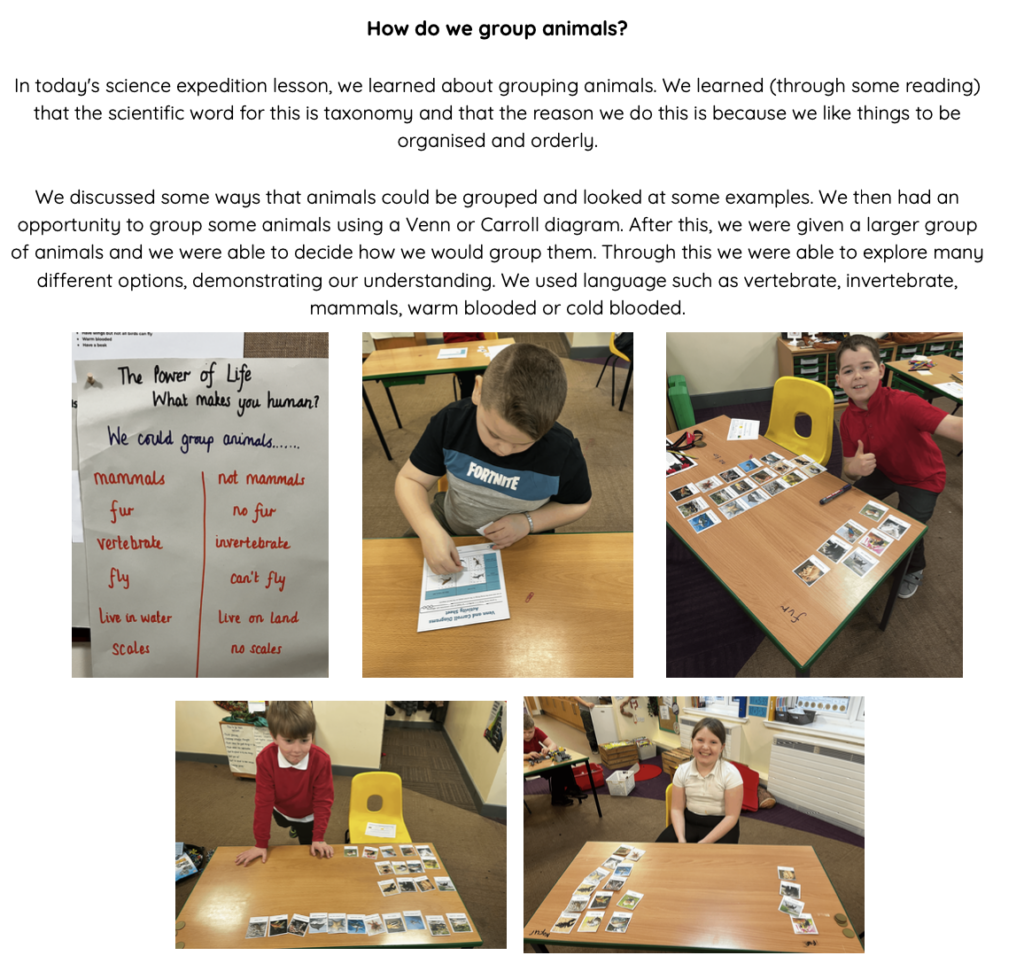
Grouping Animals


Today we explored the energy ball a little more, continuing our learning from Friday! We acted as conductors of electricity completing a circuit. We then added other objects to the circuit to see if they were conductors or insulators of electricity.
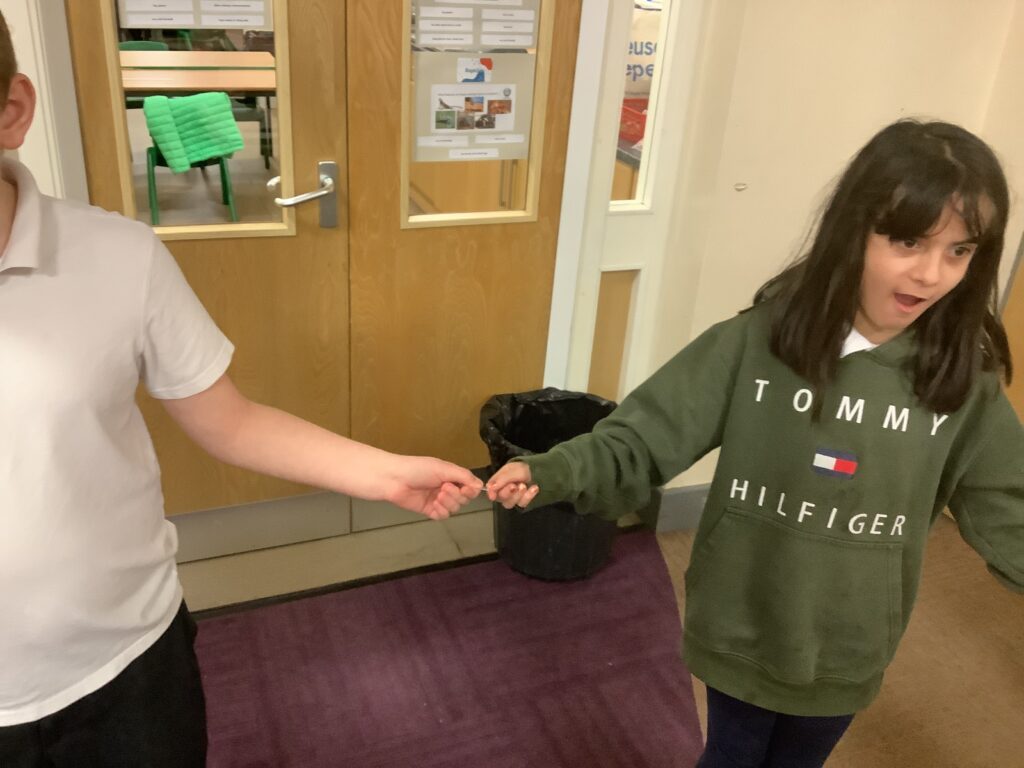
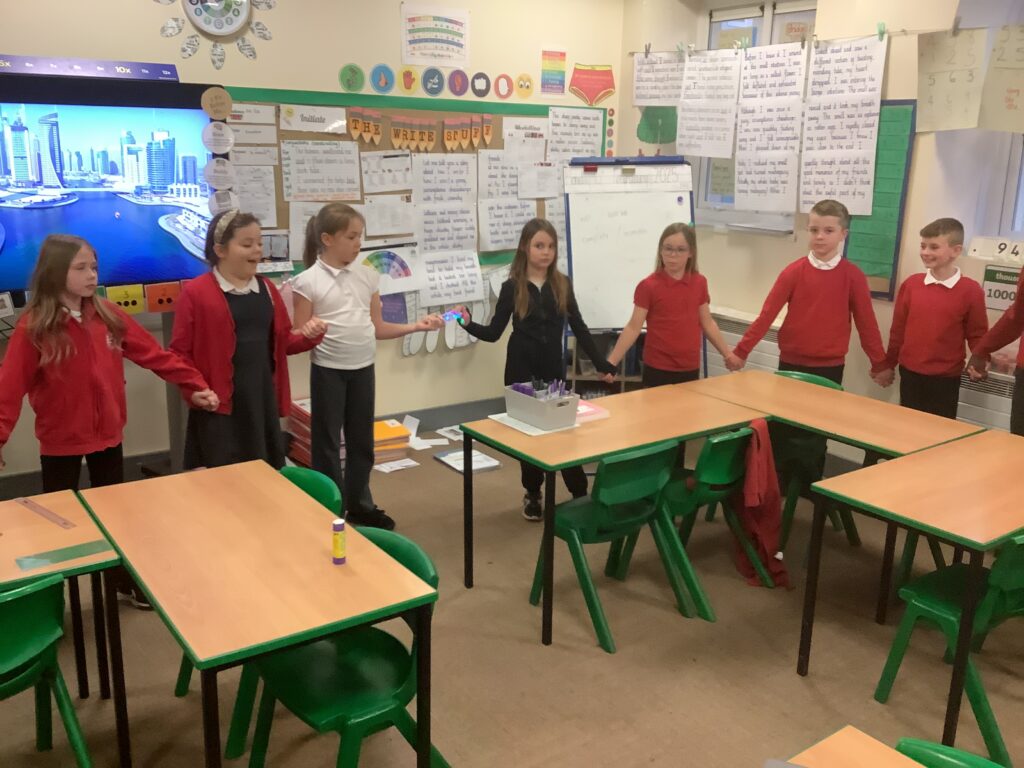
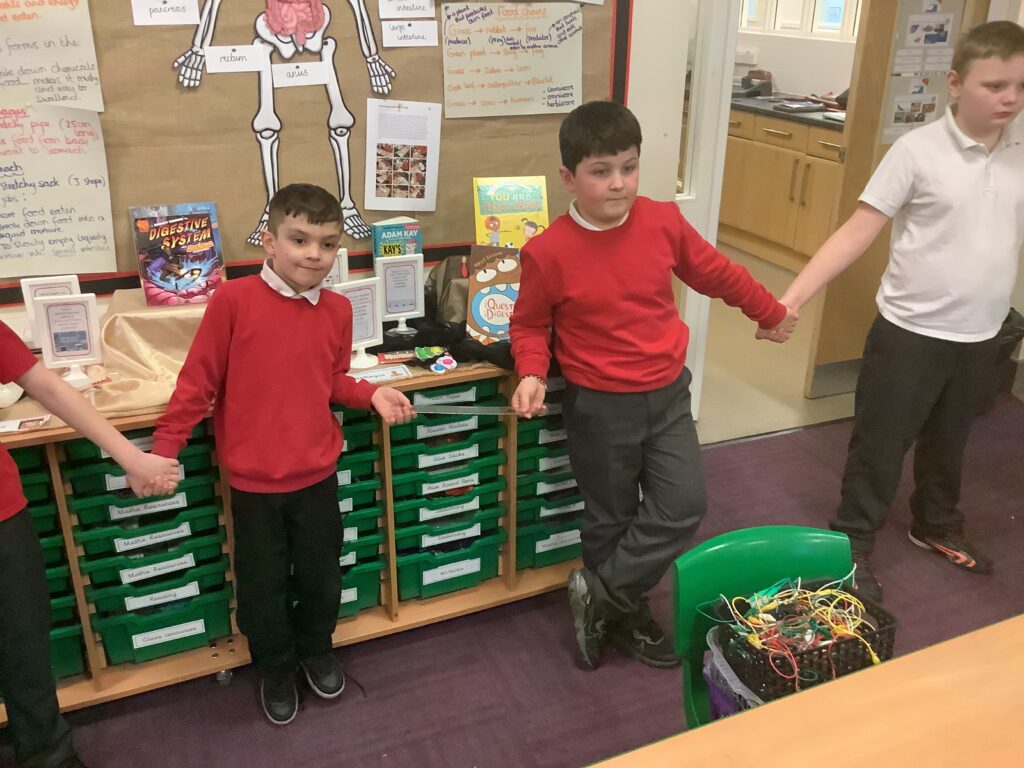
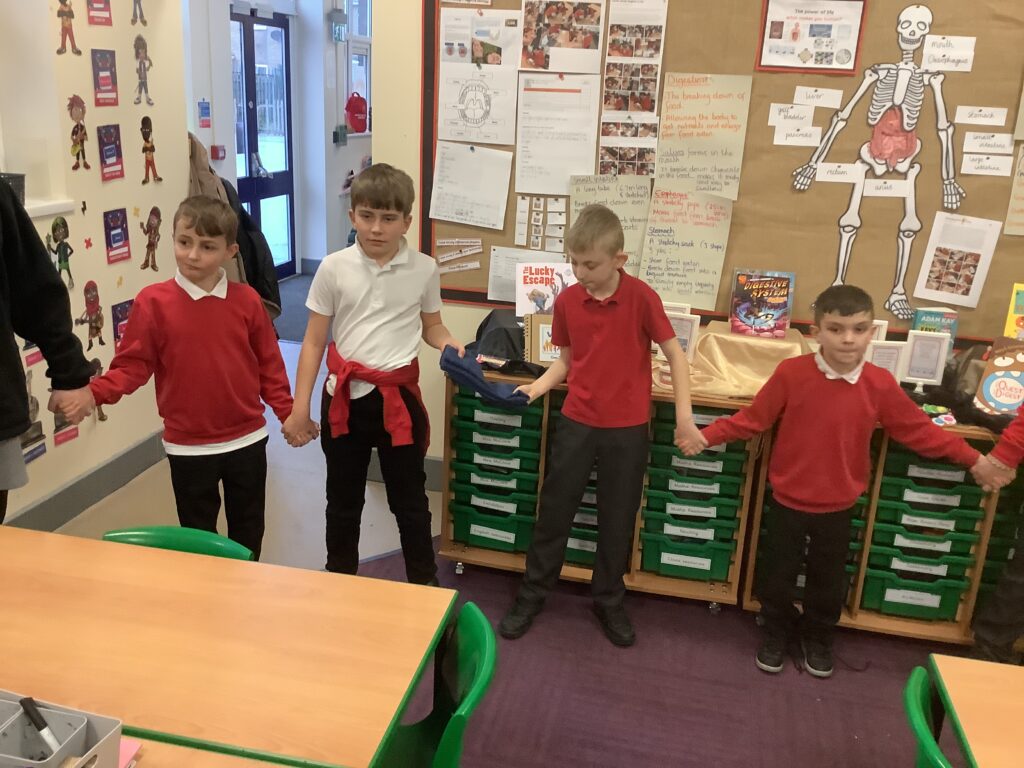

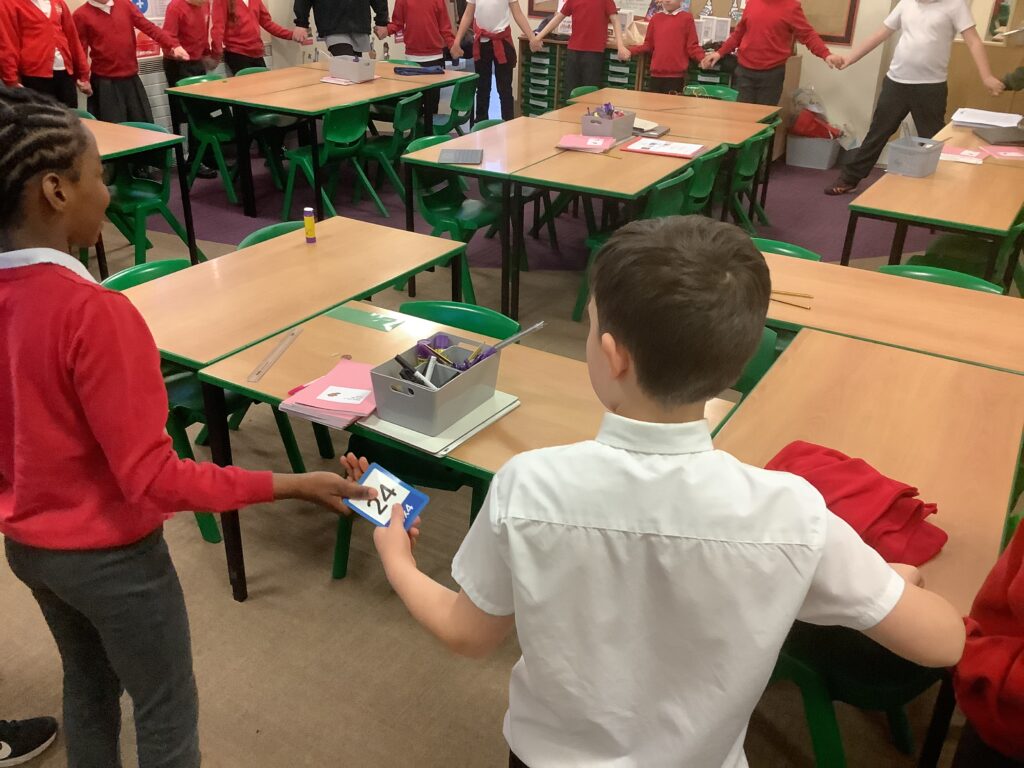
Firstly, we recapped our learning about appliances and played a game to say whether they were electrical and if they were mains or battery powered. We then discussed what a circuit was and the different components which we use to construct a series circuit. In mini-crews, we made circuits and then drew them using symbols. We had great fun exploring what the different components did.
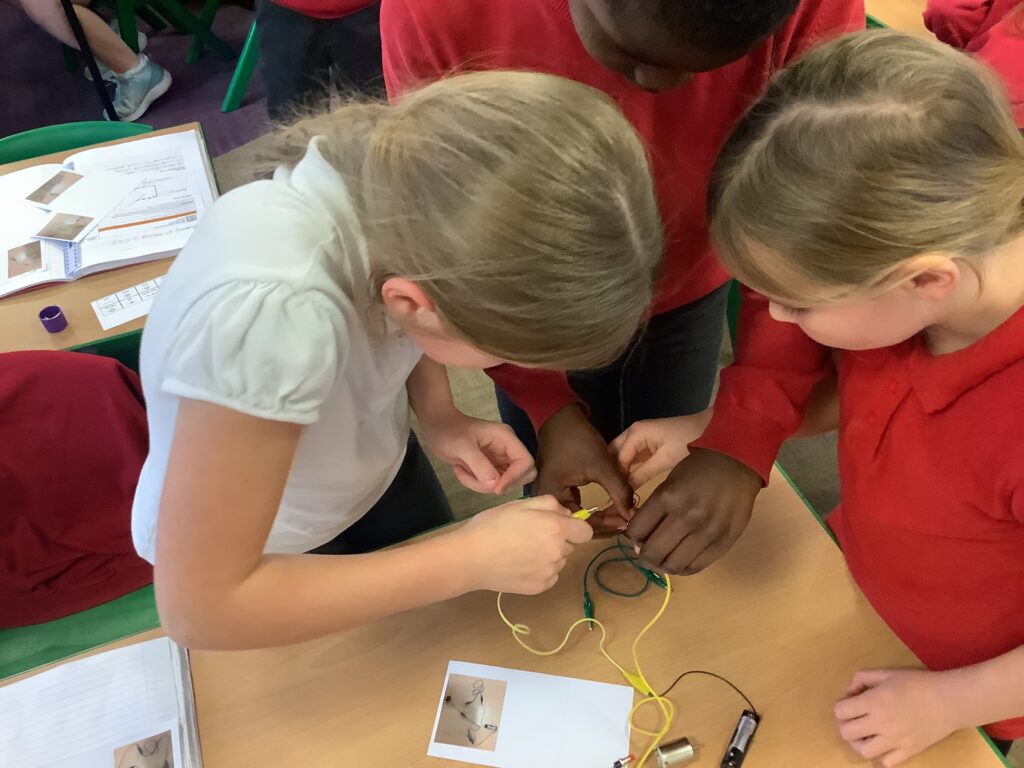
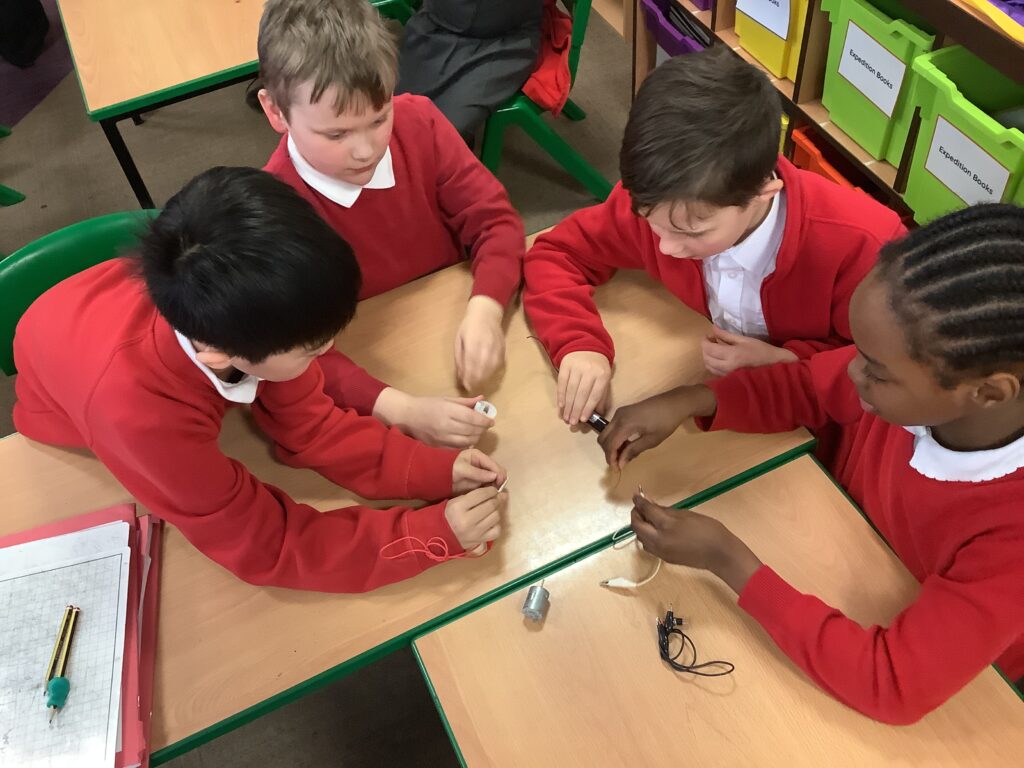
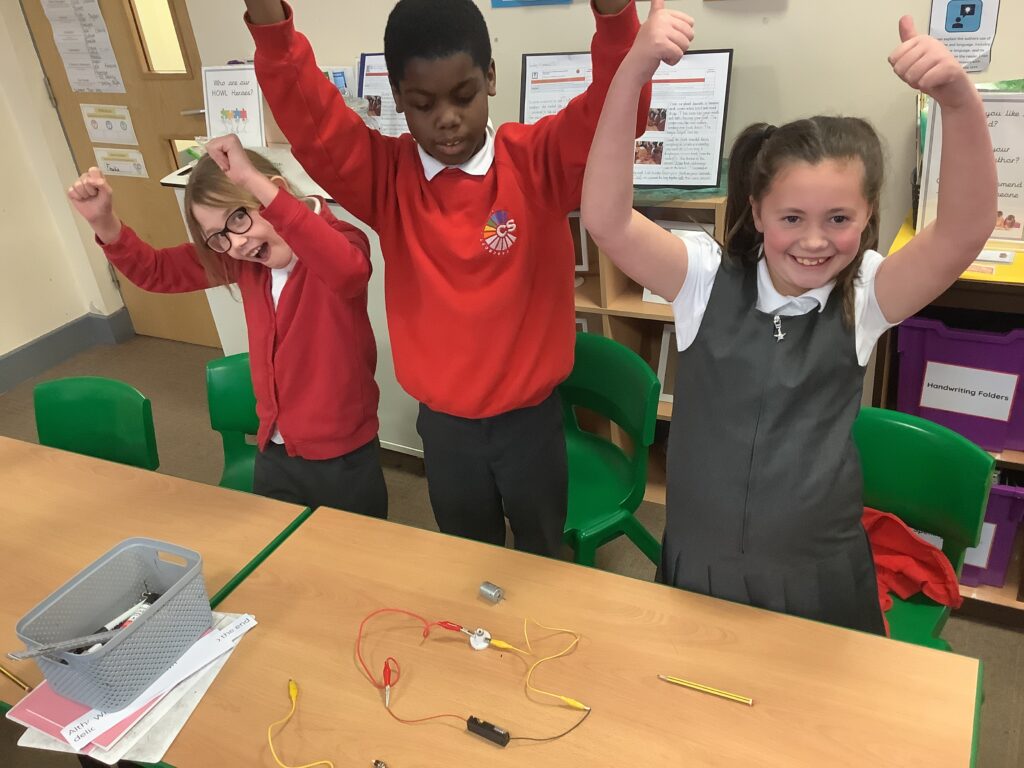

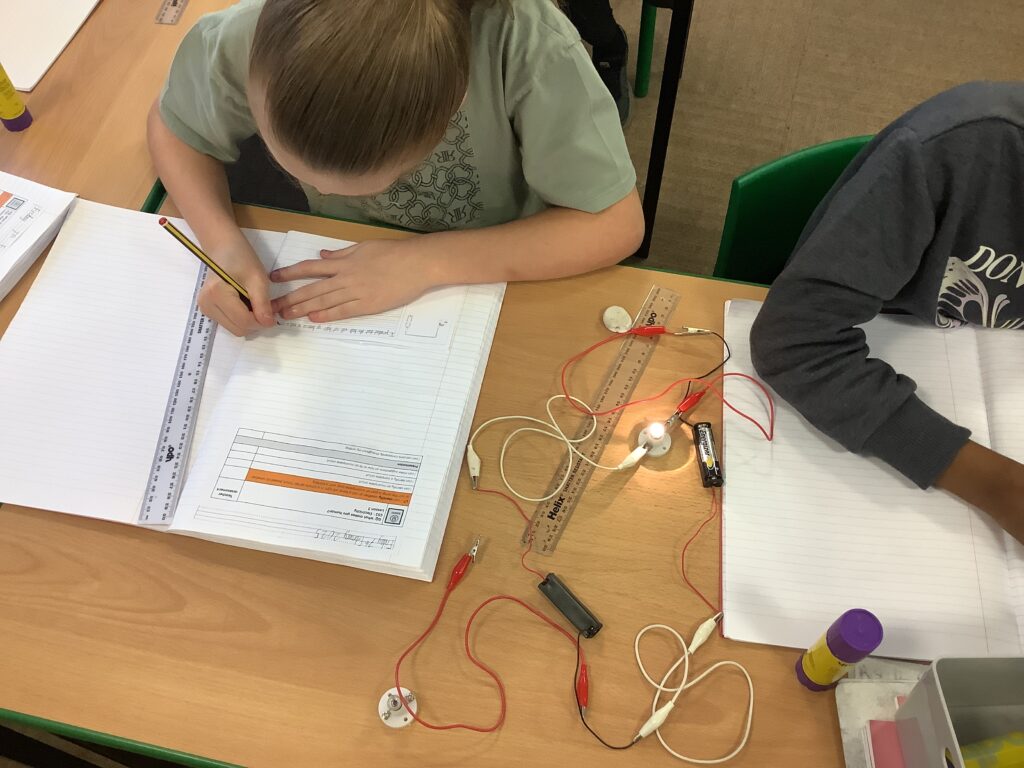
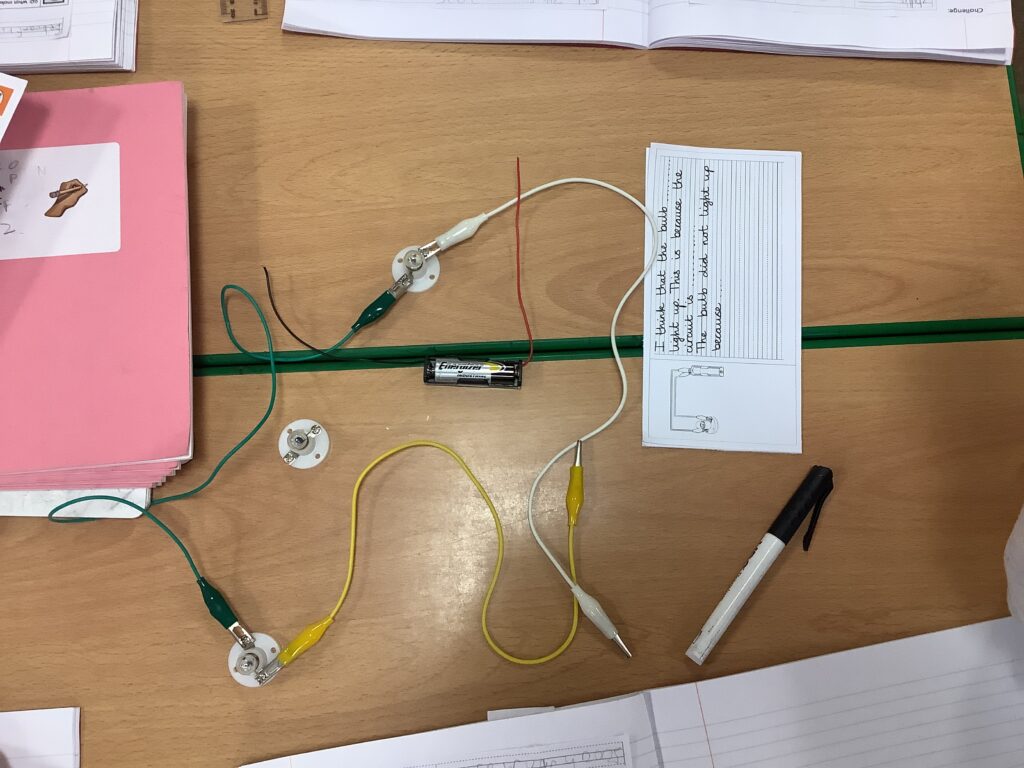
Next, we investigated what happened in complete and incomplete circuits. Using an energy stick, we explored what happened when we all were connected and the stick lit up. This was amazing!
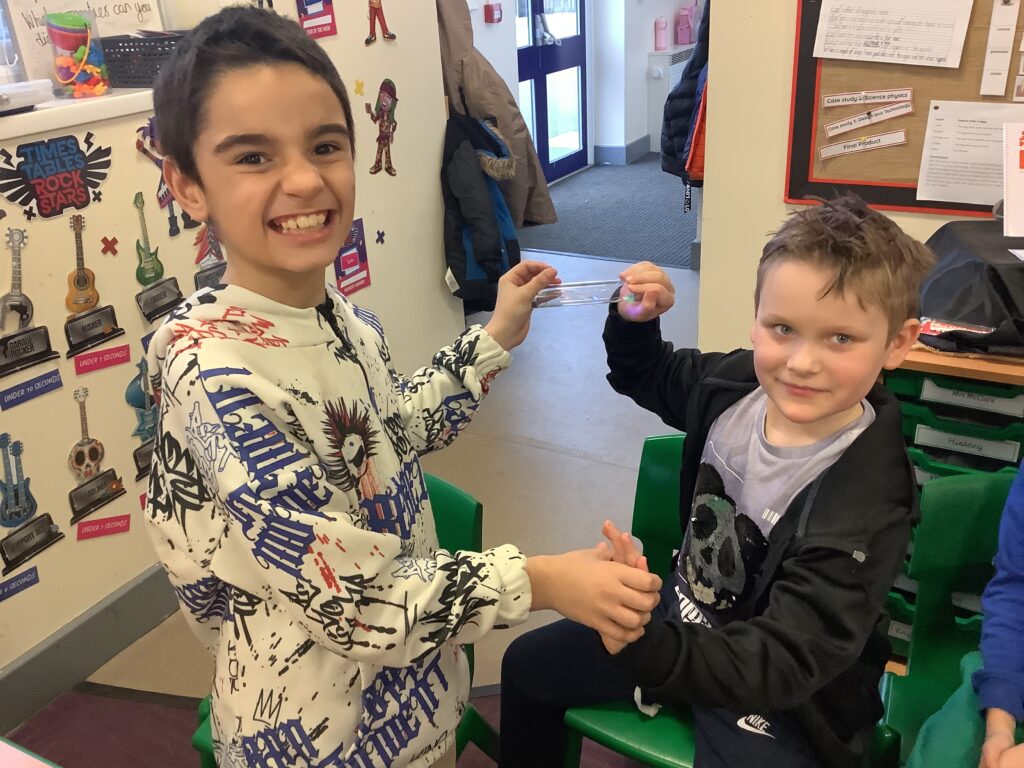
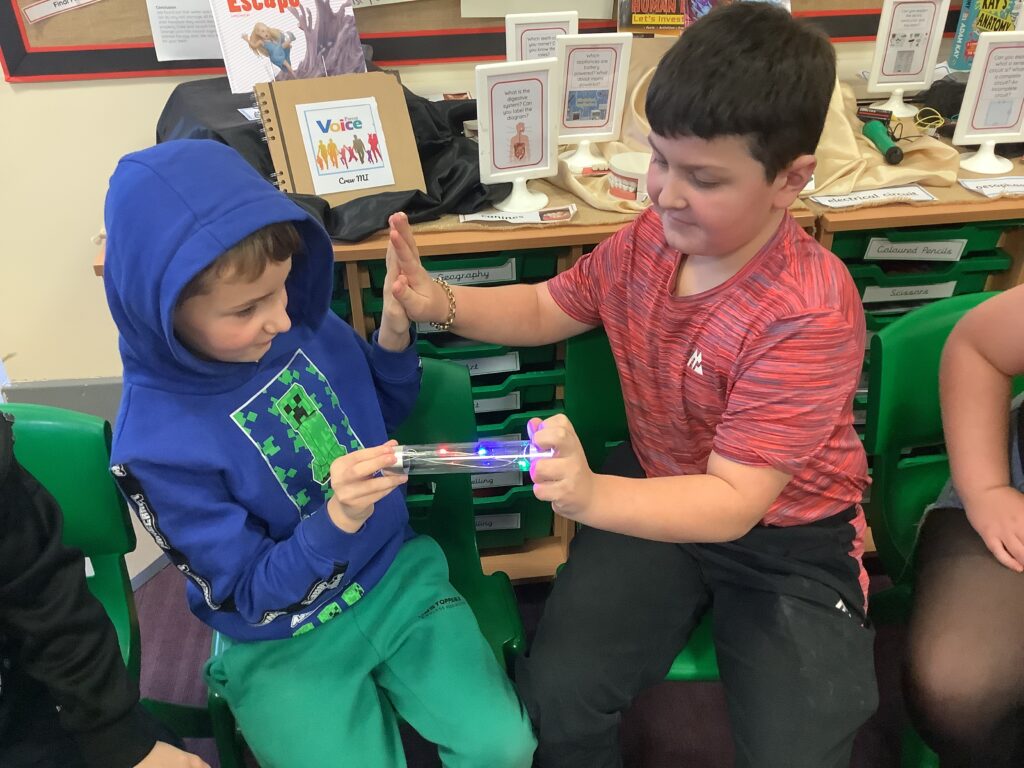

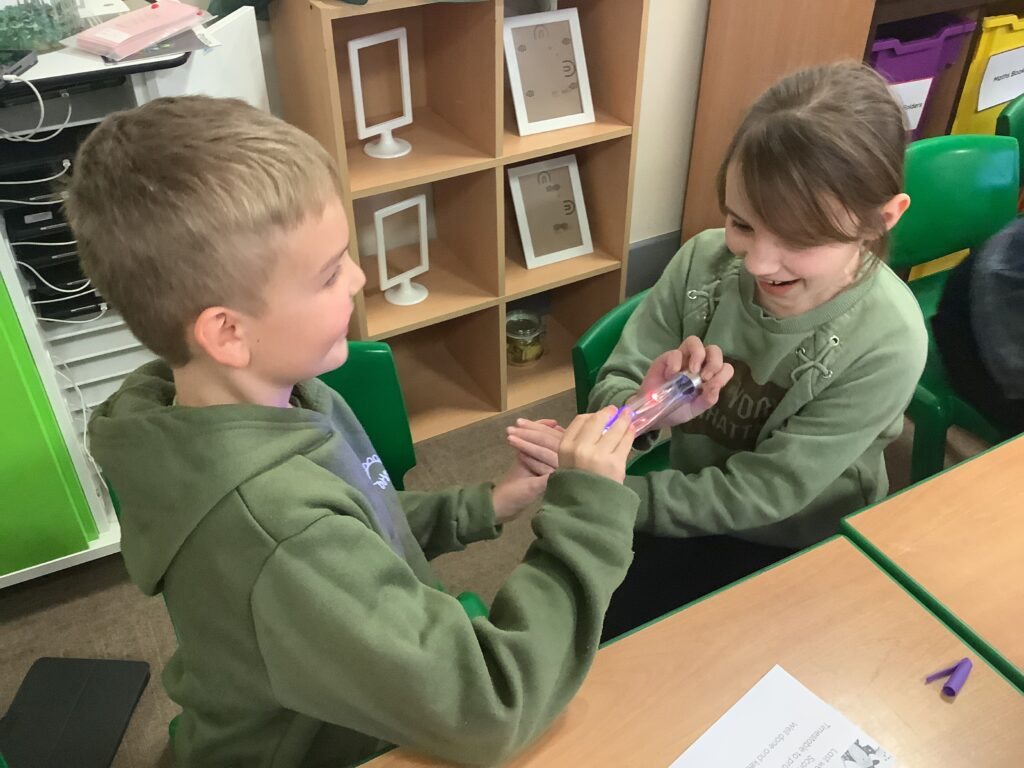
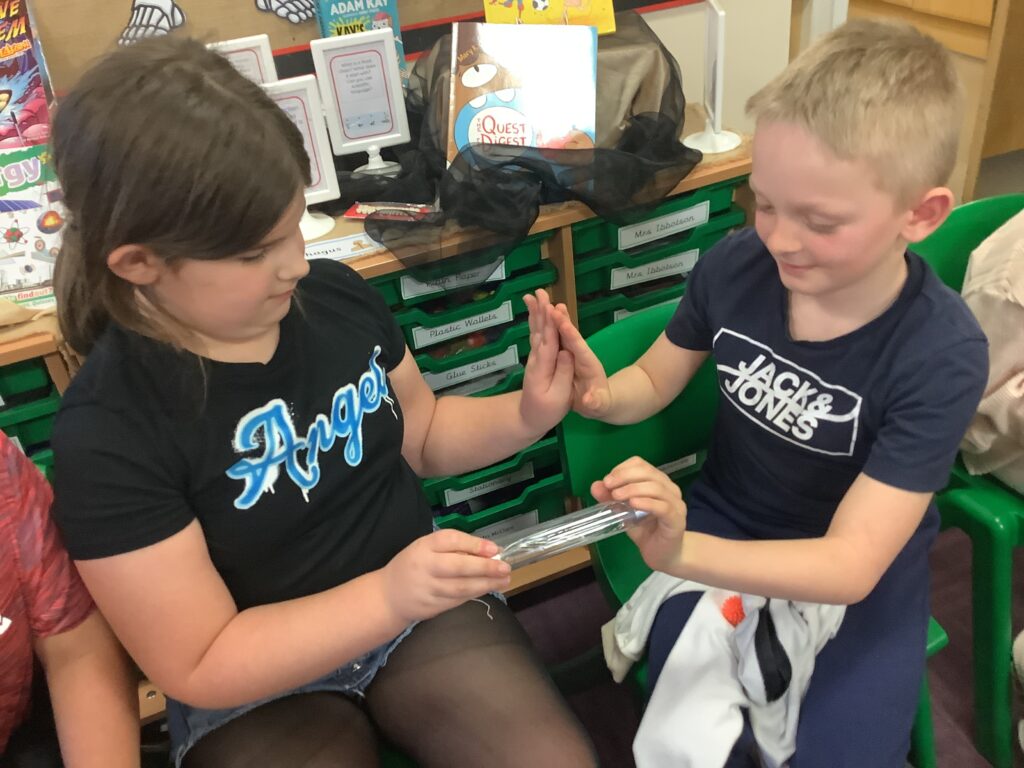
Finally, we looked at pictures of circuits and then predicted if they would work. We then built them and tested them.
Some great case study reflections on the digestive system 🙂 Children used the knowledge they had gained through case study one to write an explanation of what happens during digestion.
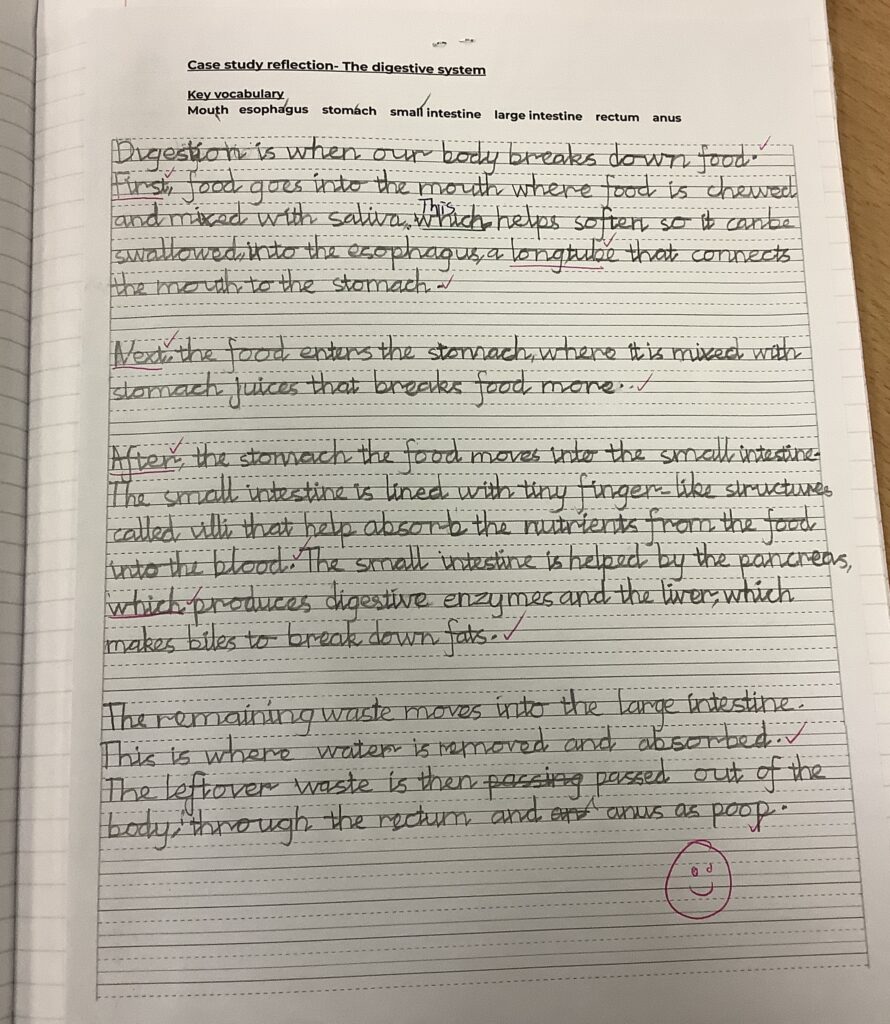
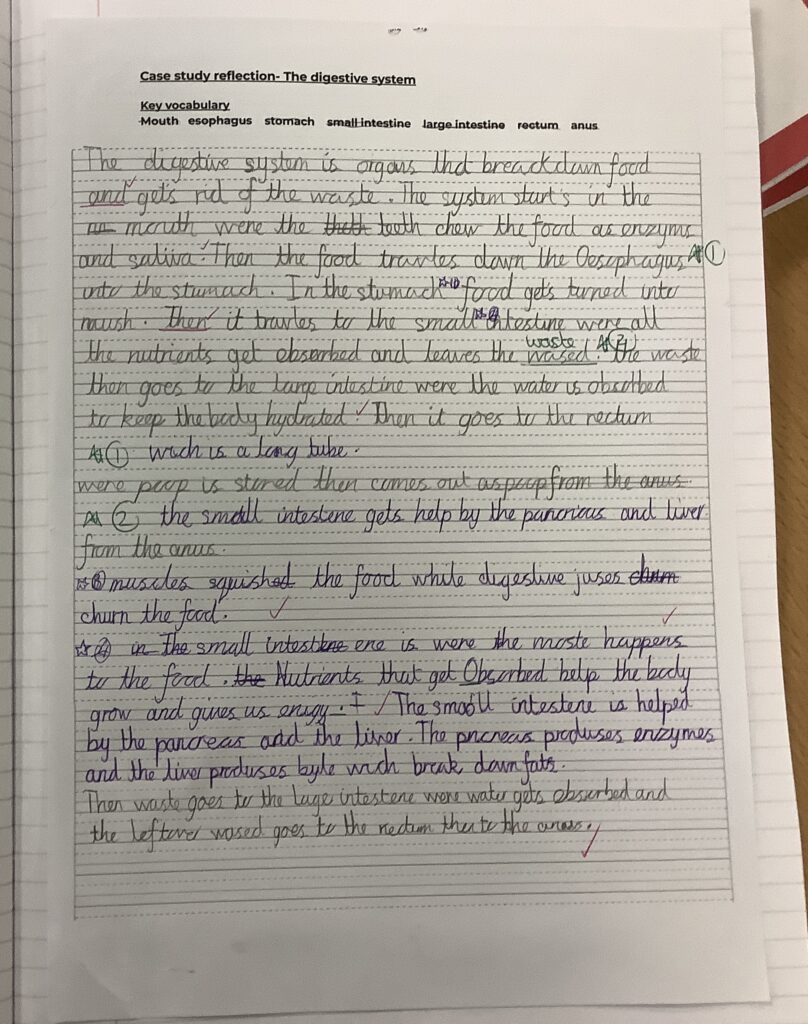
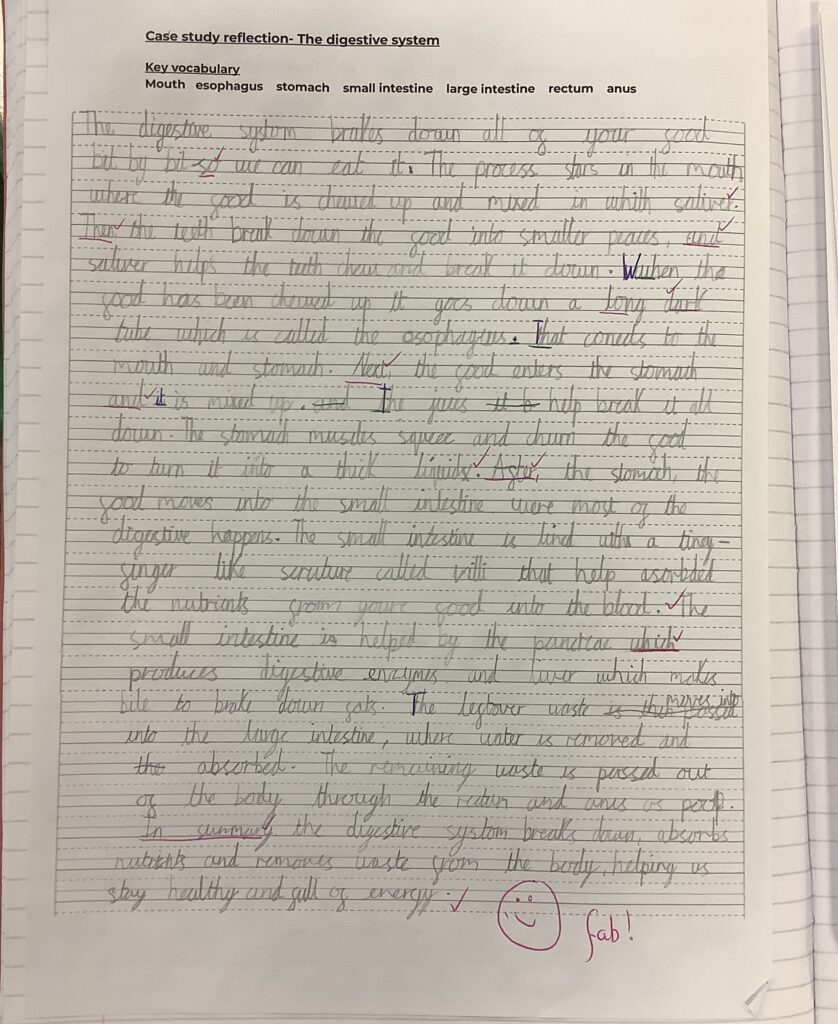
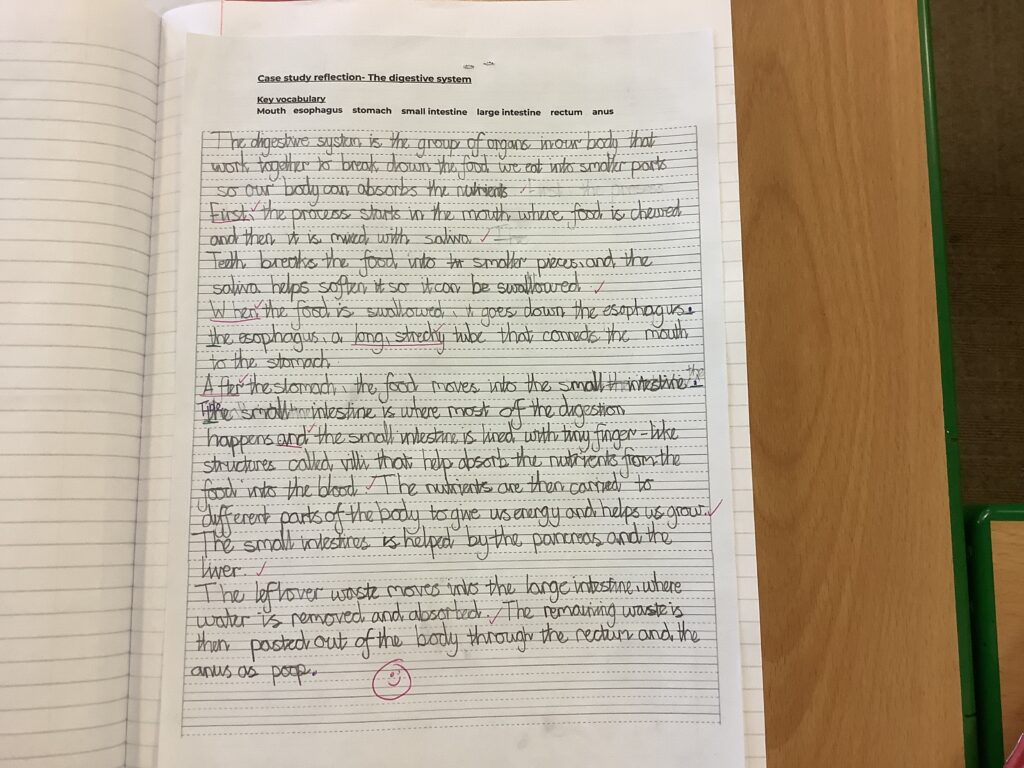
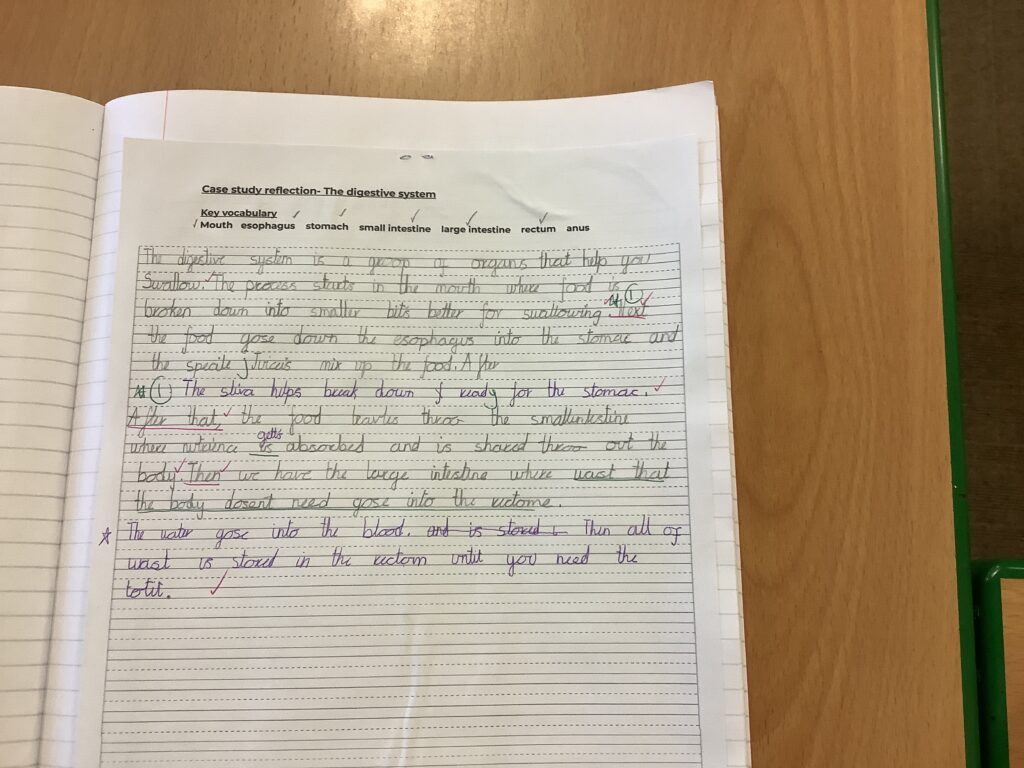
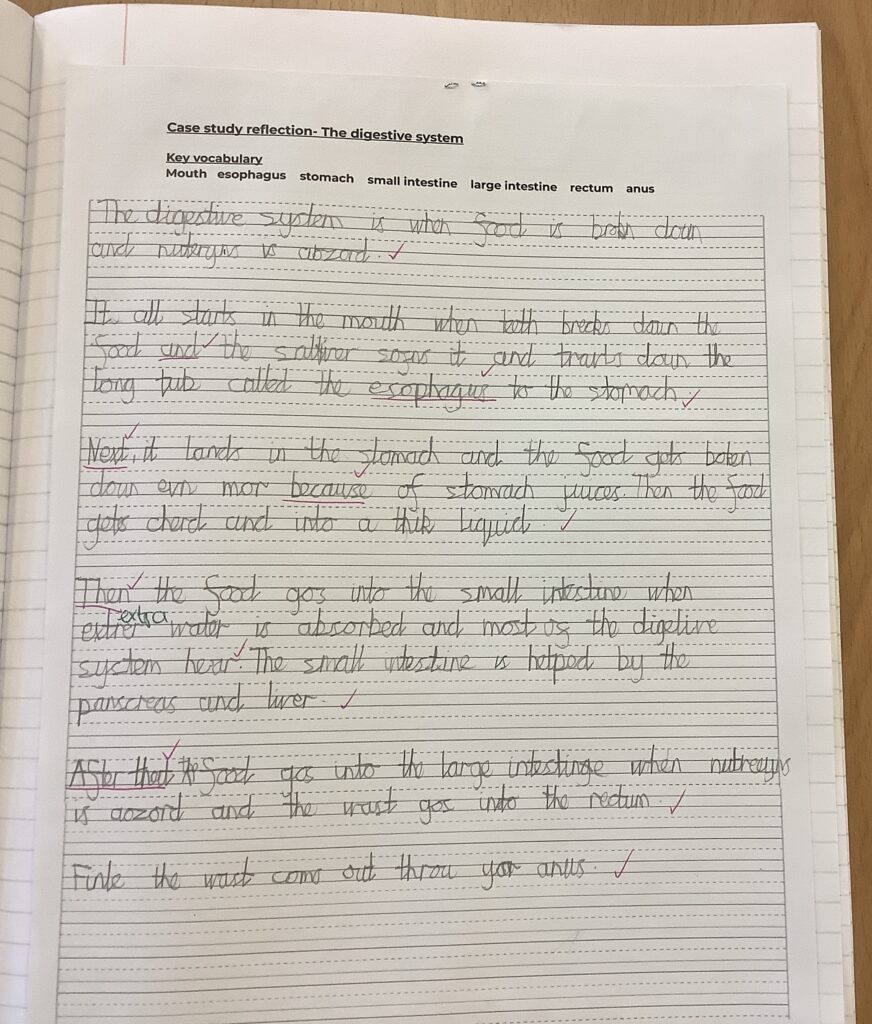
Today in expedition we have discussed the differences between vertebrates and invertebrates. We used our reading skills to retrieve information, by playing fastest finger first and discussing our findings. Some of the facts really surprised us when reading. We then explored the types of skeletons linking these to vertebrates and invertebrates. We then tested our understanding so far with a quick quiz!
We then worked to sort animals into the two groupings based on what we had discovered – vertebrates and invertebrates. Moving onto the human skeleton, we explored how many bones an adult human skeleton has and looked at what a skeleton does. Did you know that an adult has 206 bones but as a baby, we have 300! We linked our skeleton to the digestive process, thinking about the organs that are protected by our bones. We assessed our understanding with a Kahoot quiz, it was very close with only a point between Mason and Declan!
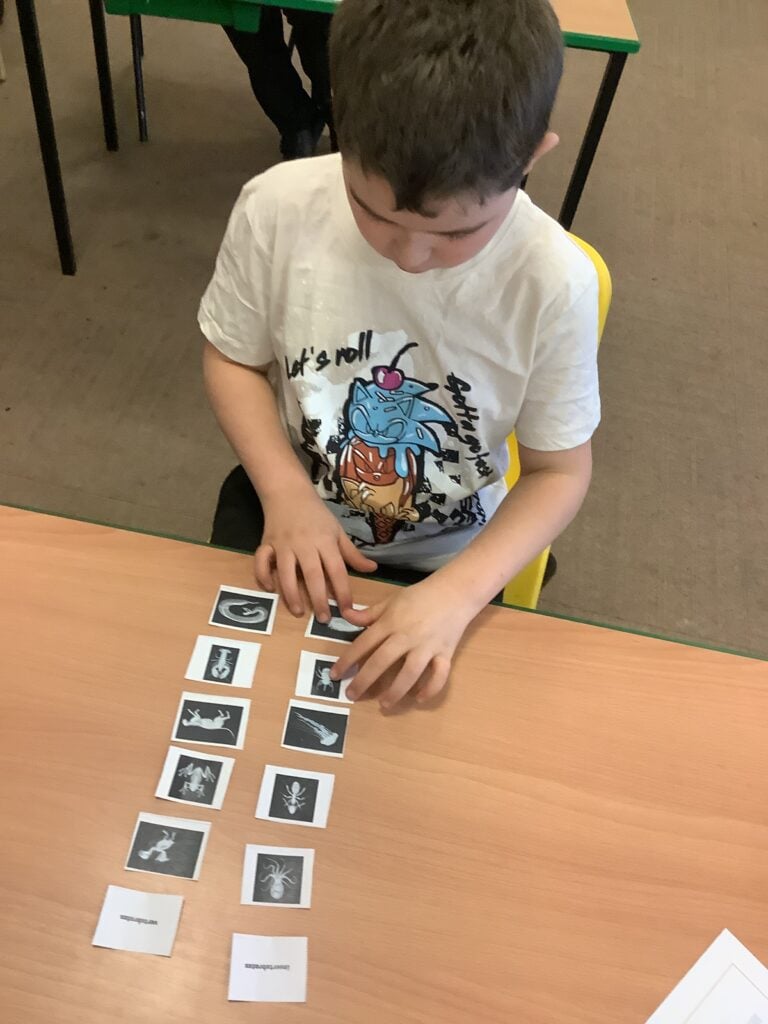
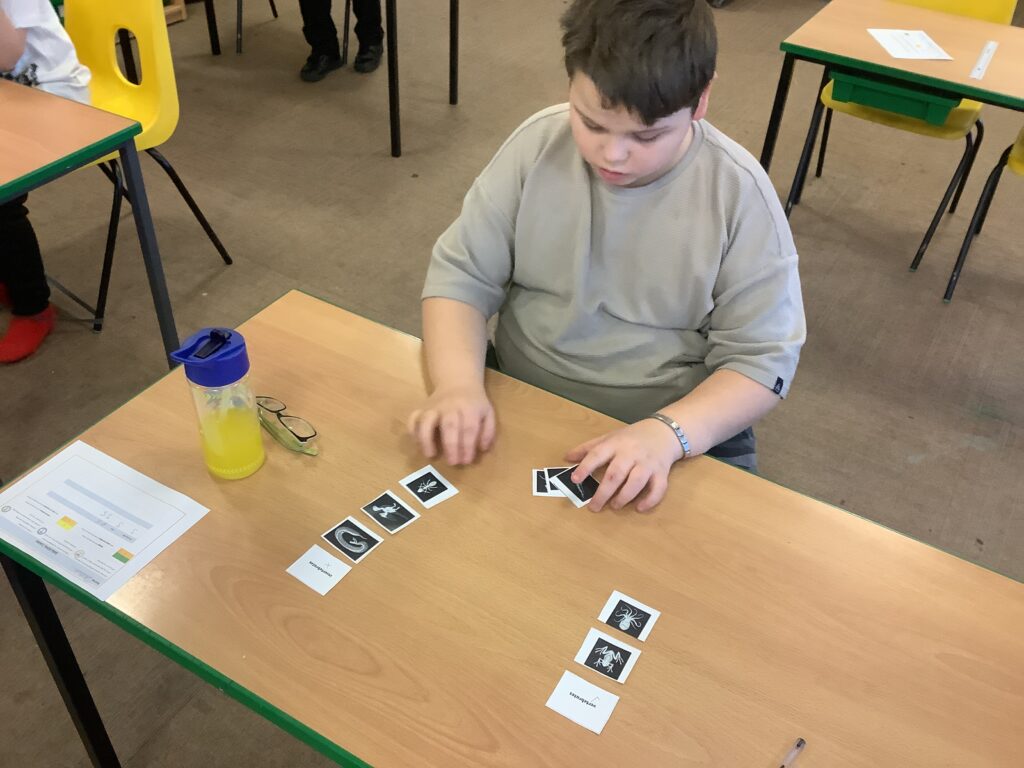
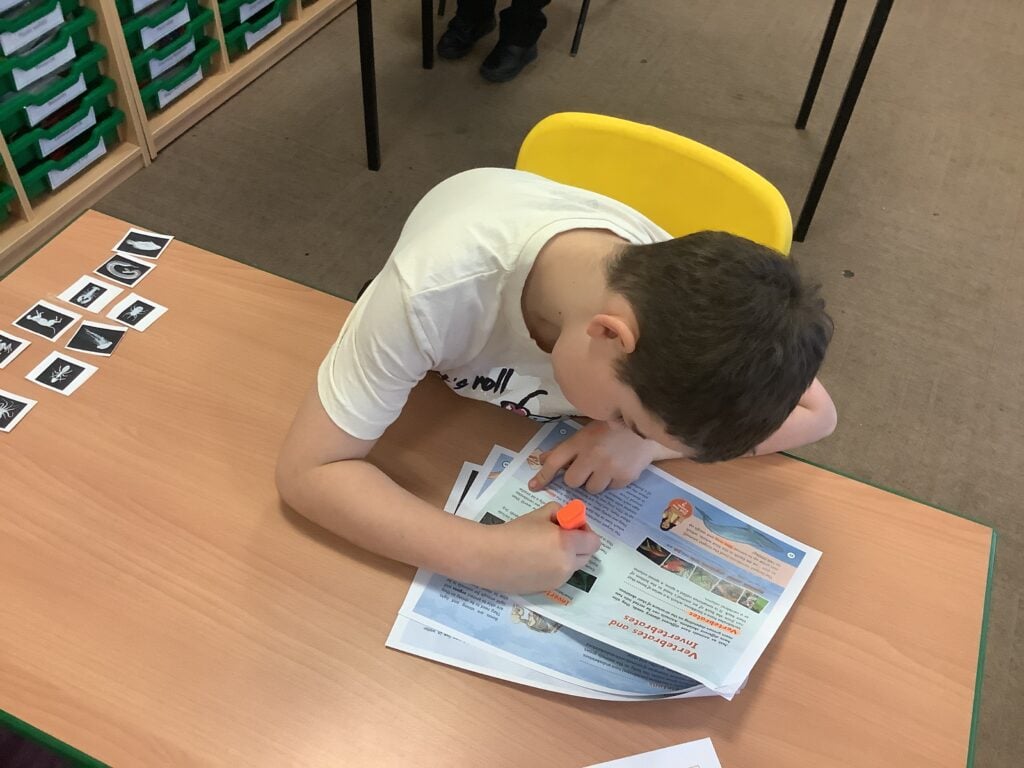
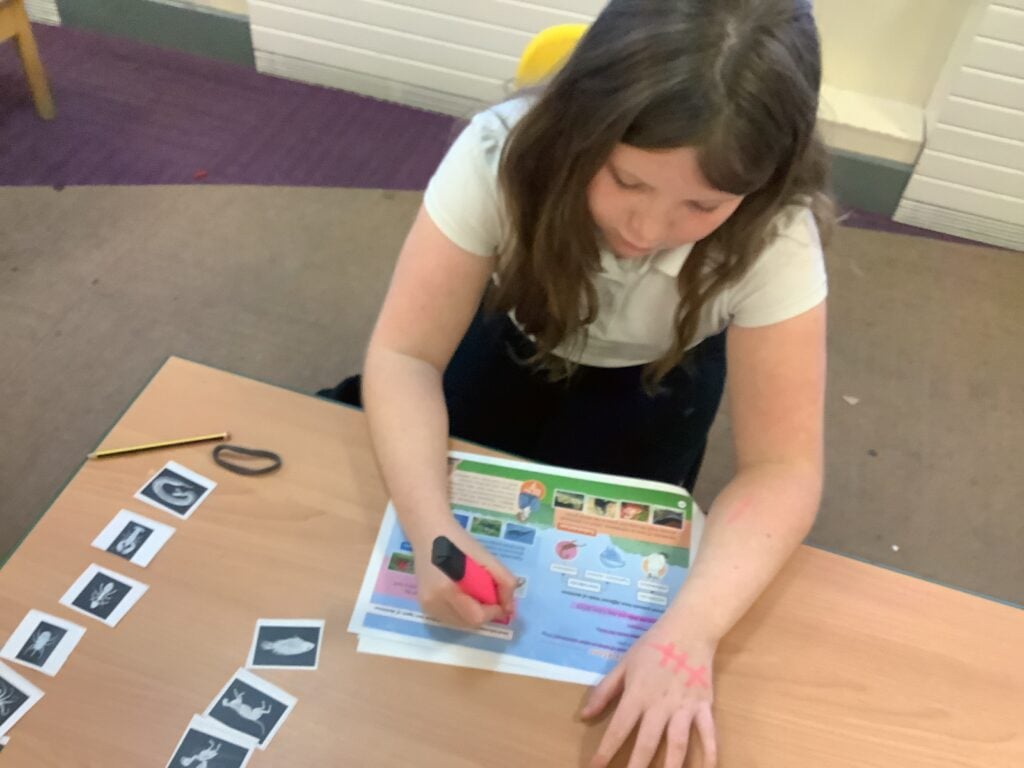
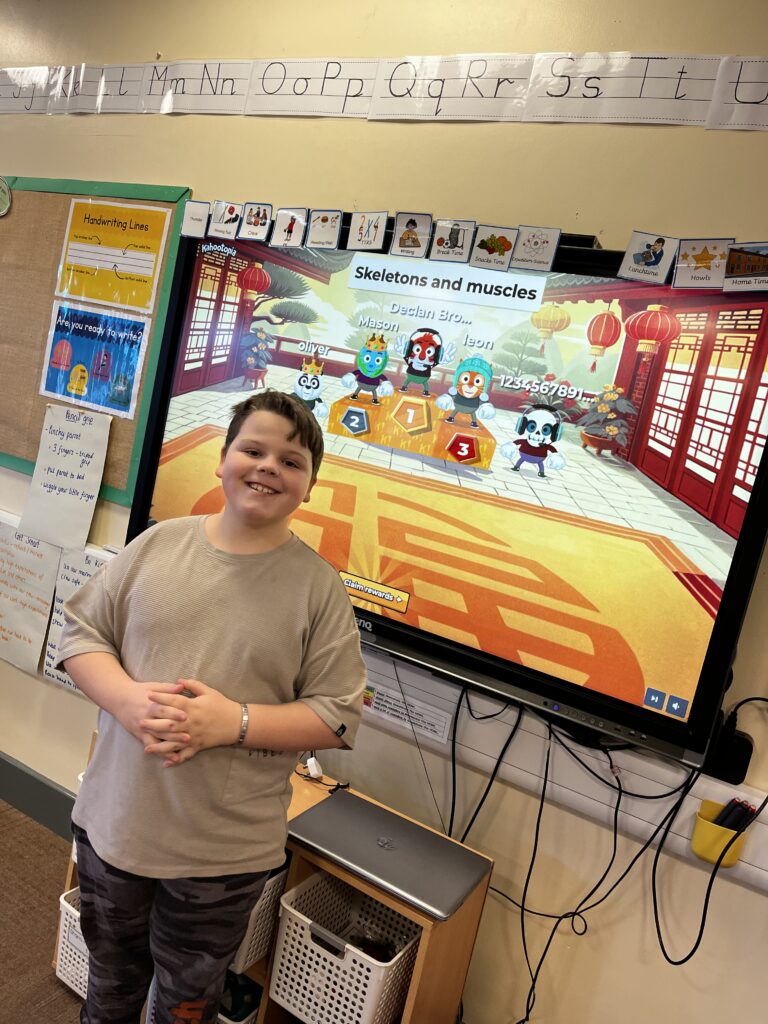
In our expedition lesson (science), we have been learning about grouping animals. We learned (through some reading) that the scientific word for this is taxonomy and that the reason we do this is because we like things to be organised and orderly.
We discussed some ways that animals could be grouped and looked at some examples. Children then had an opportunity to group some animals using a Venn diagram. After this, they were given a larger group of animals where they worked in pairs to decide how they could be grouped. Children were able to show a good understanding of how they could be grouped differently and it was great to see them using language such as vertebrate, invertebrate, mammals, warm blooded or cold blooded. We’re now ready to move on to classification.
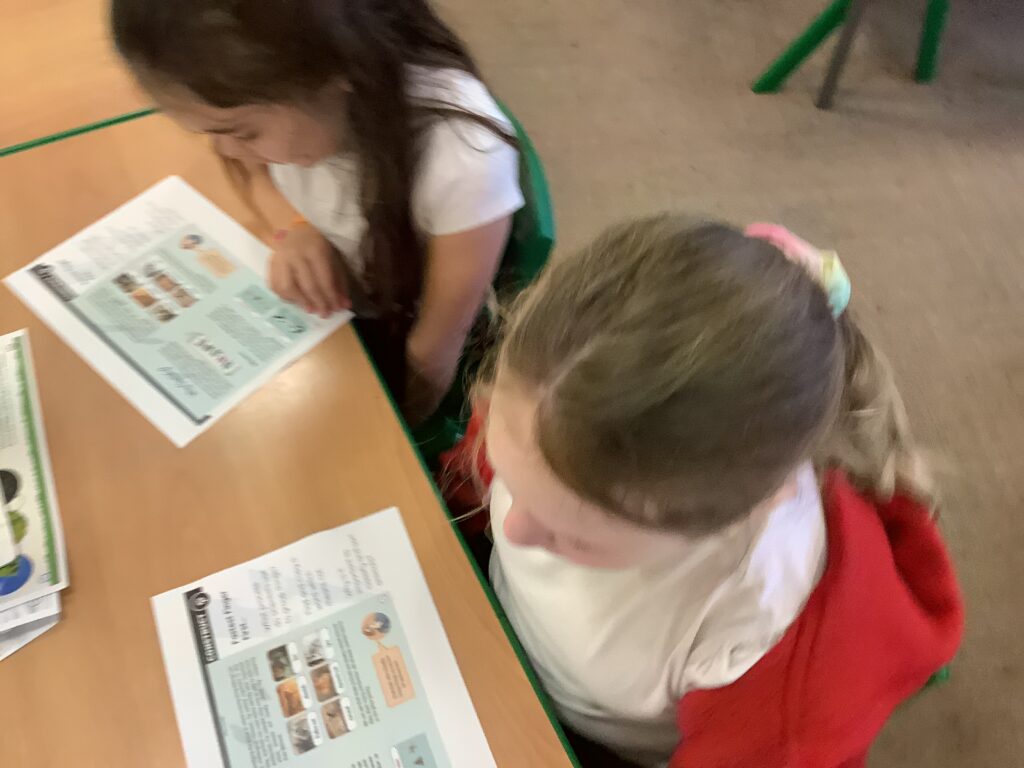
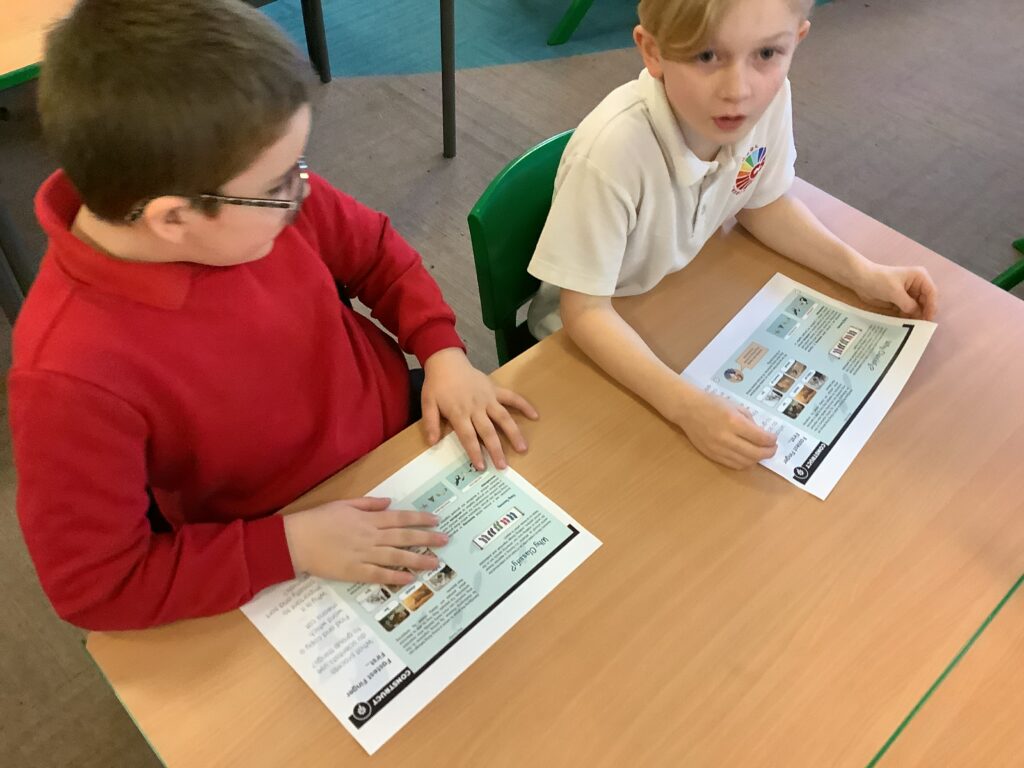
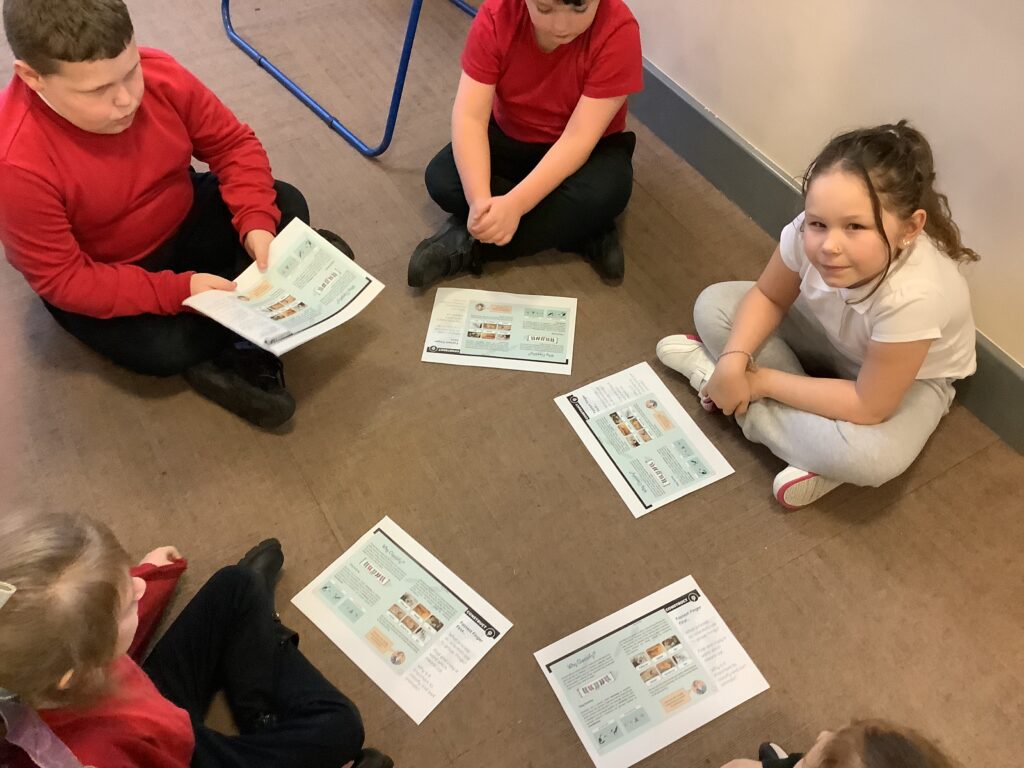
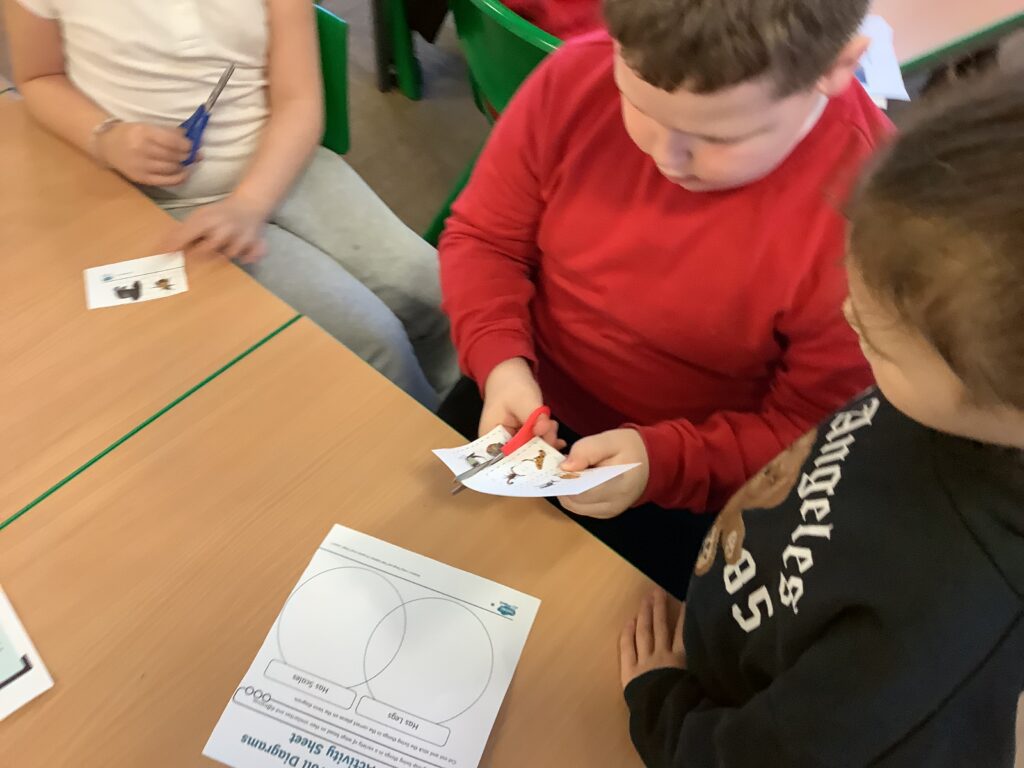
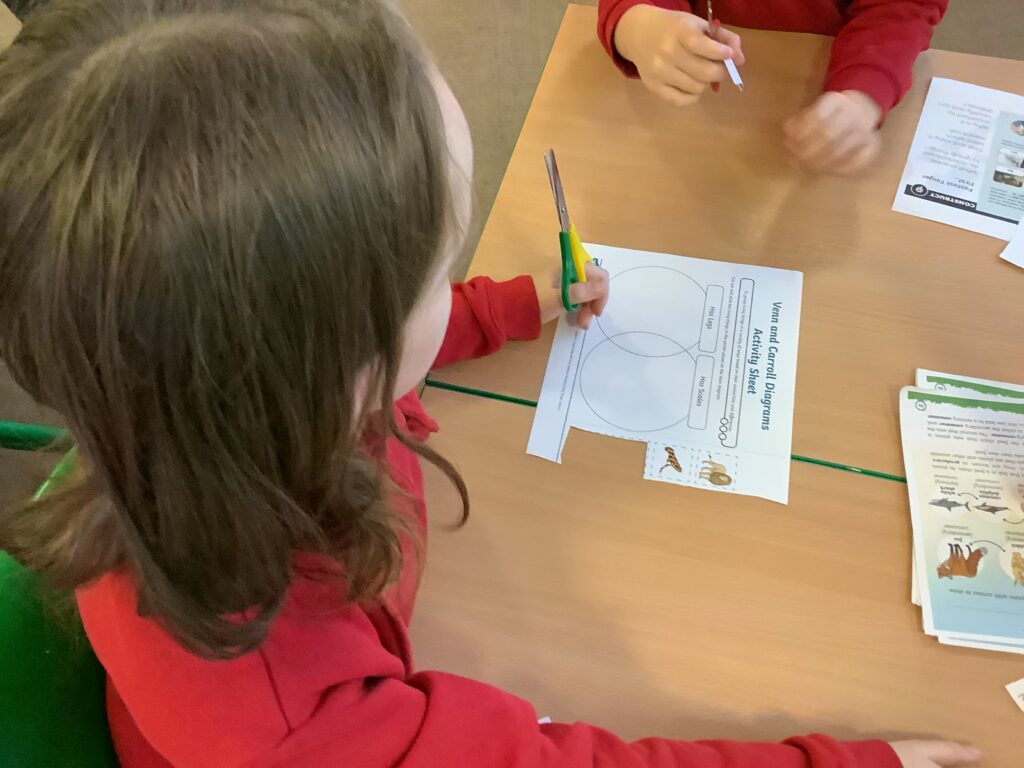
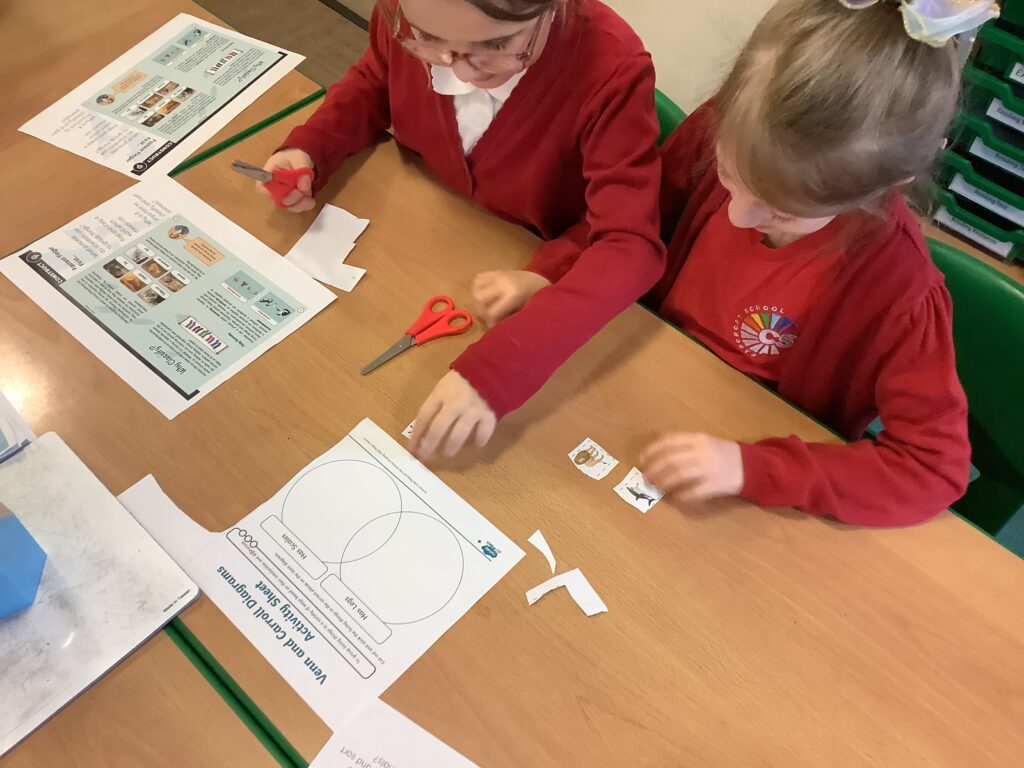
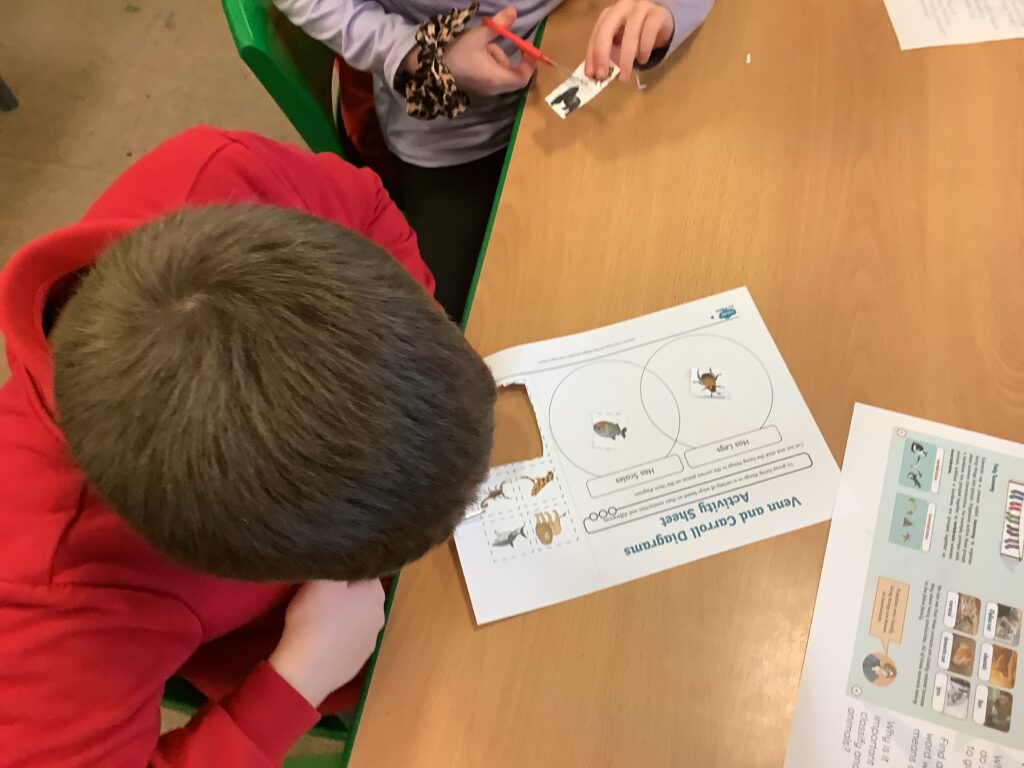

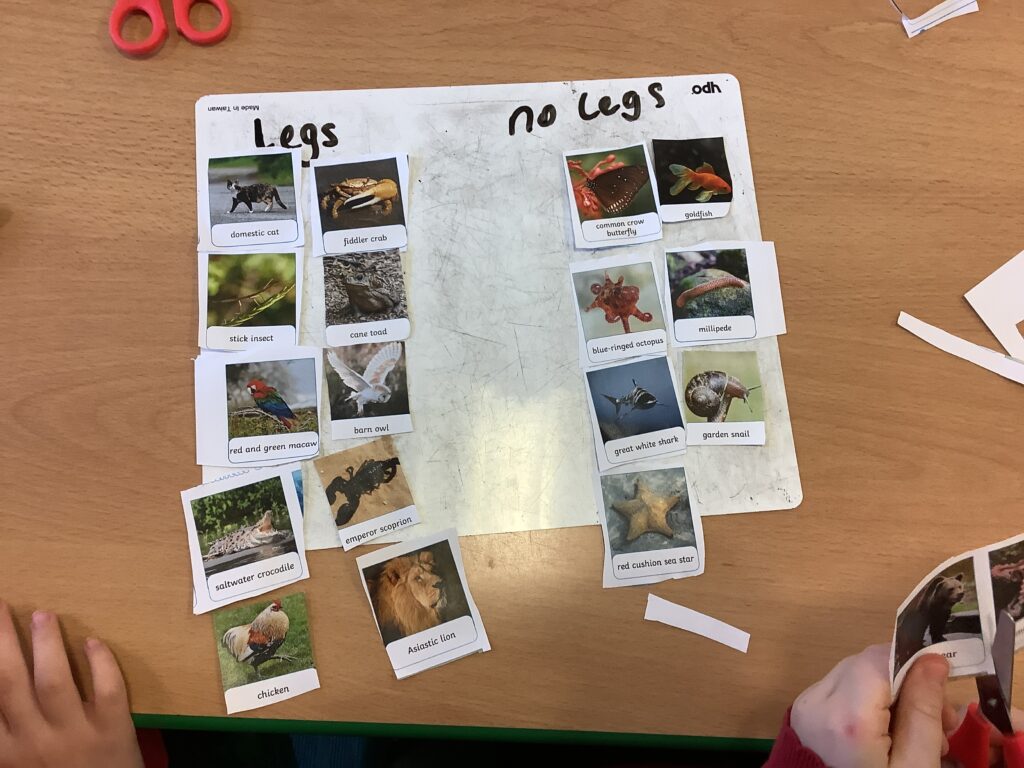
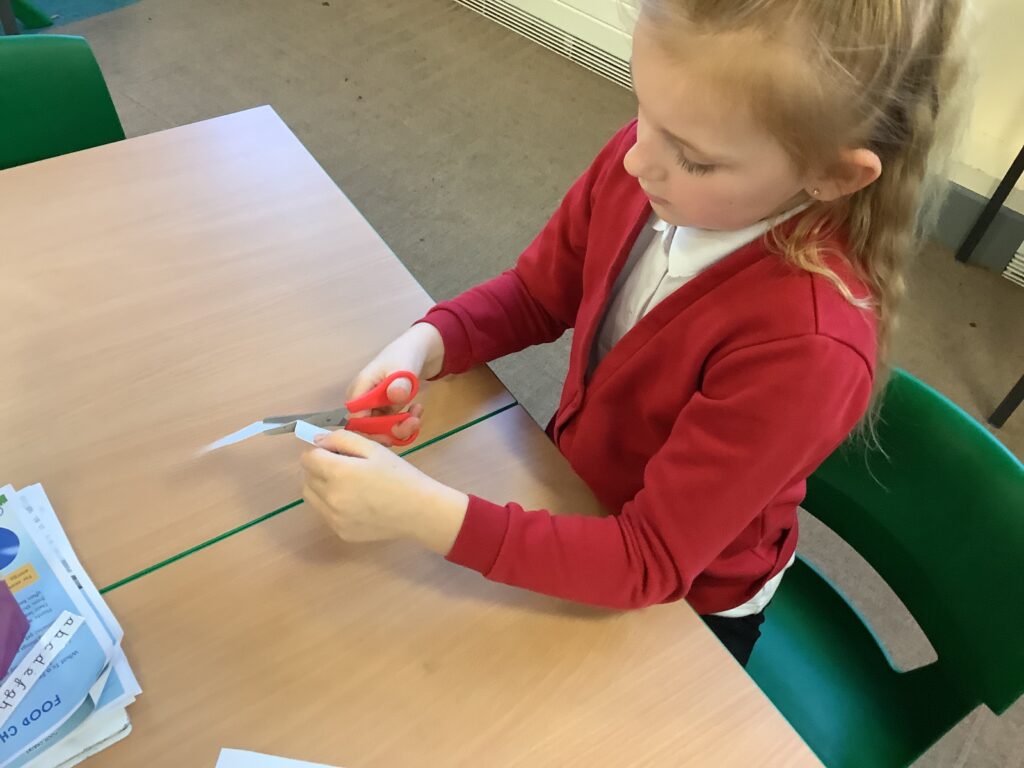


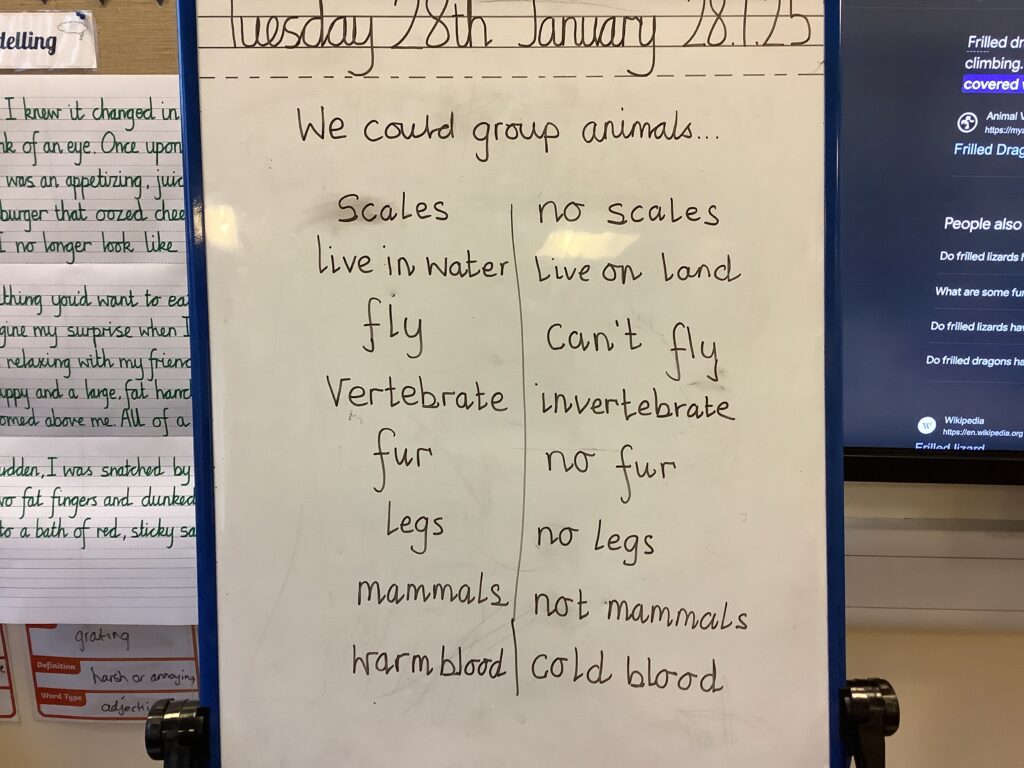
Our expedition lesson today continued to look at grouping living things. First, we recapped our previous learning on vertebrates and invertebrates, working with our partner to sort a variety of animals.
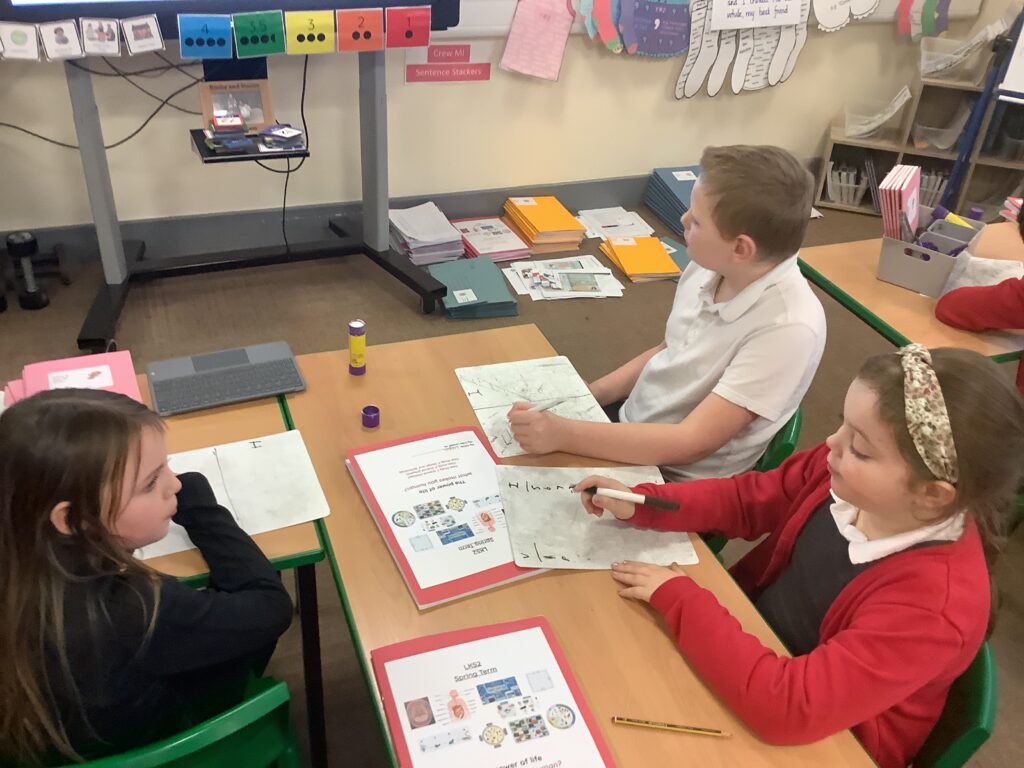

From here we started to classify vertebrates into 5 groups and watched a video clip to help us build background knowledge. We noted down facts and then shared these with the whole crew. We then explored a variety of texts, building further information on mammals, birds, reptiles, amphibians and fish. We played fastest finger to further assess our understanding. There were lots of reading opportunities again today, reading with a partner and echo read to name a few.
From here we worked in mini crews to demonstrate our understanding. We read a variety of facts and put these facts in the correct group.
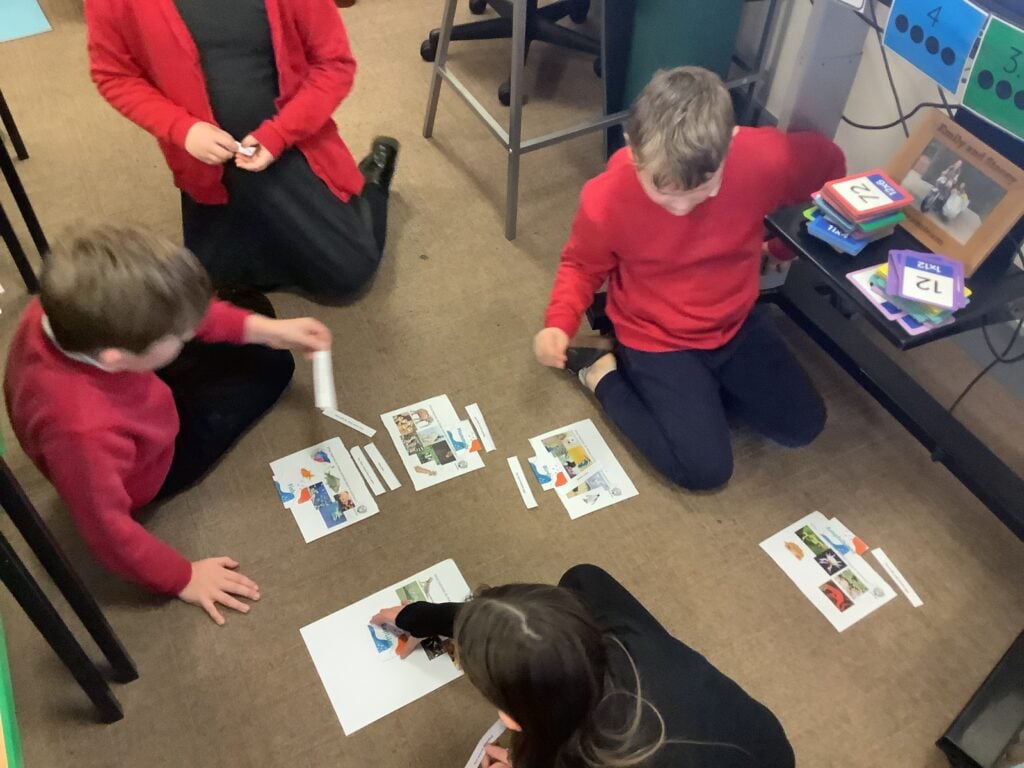
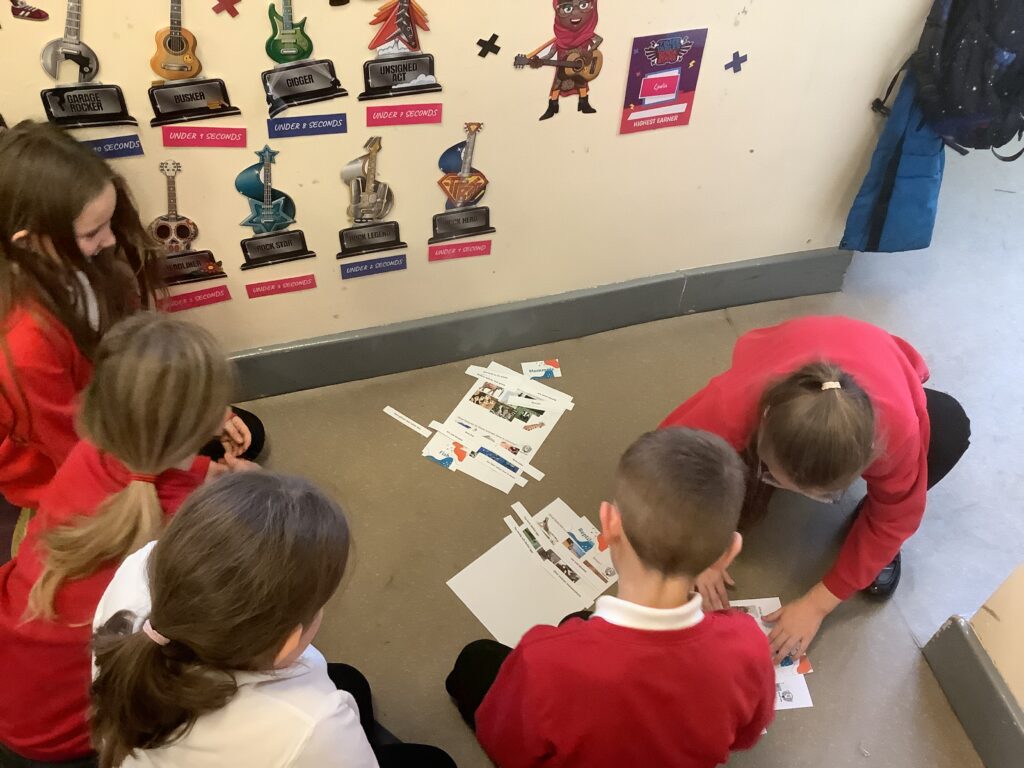
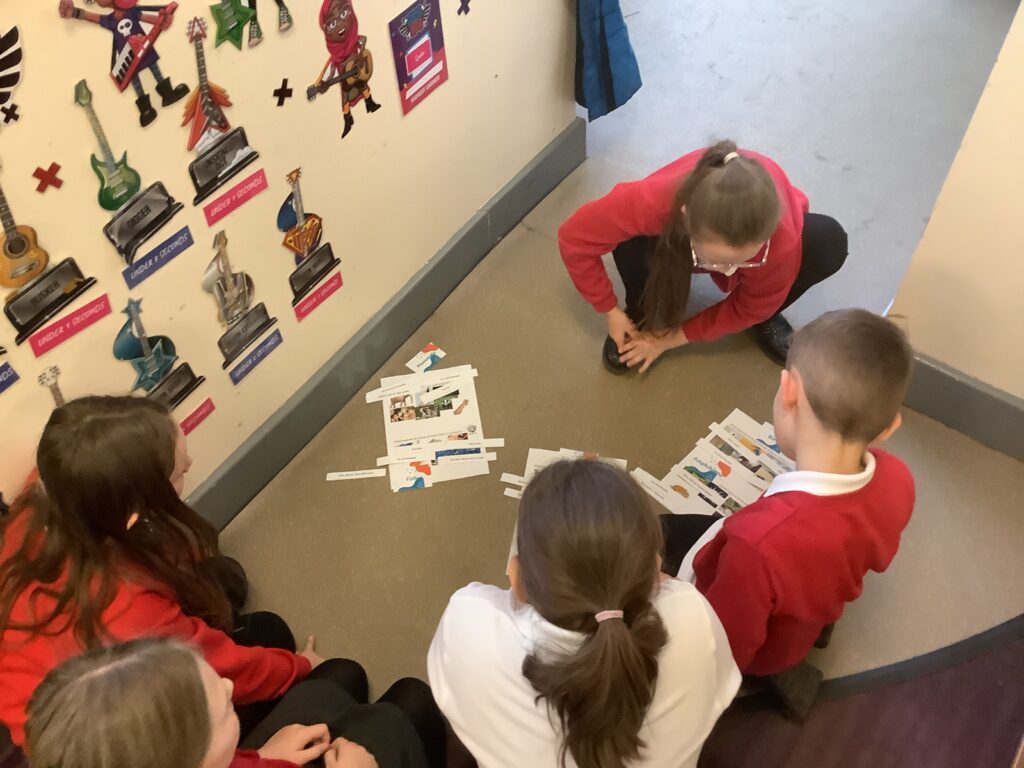

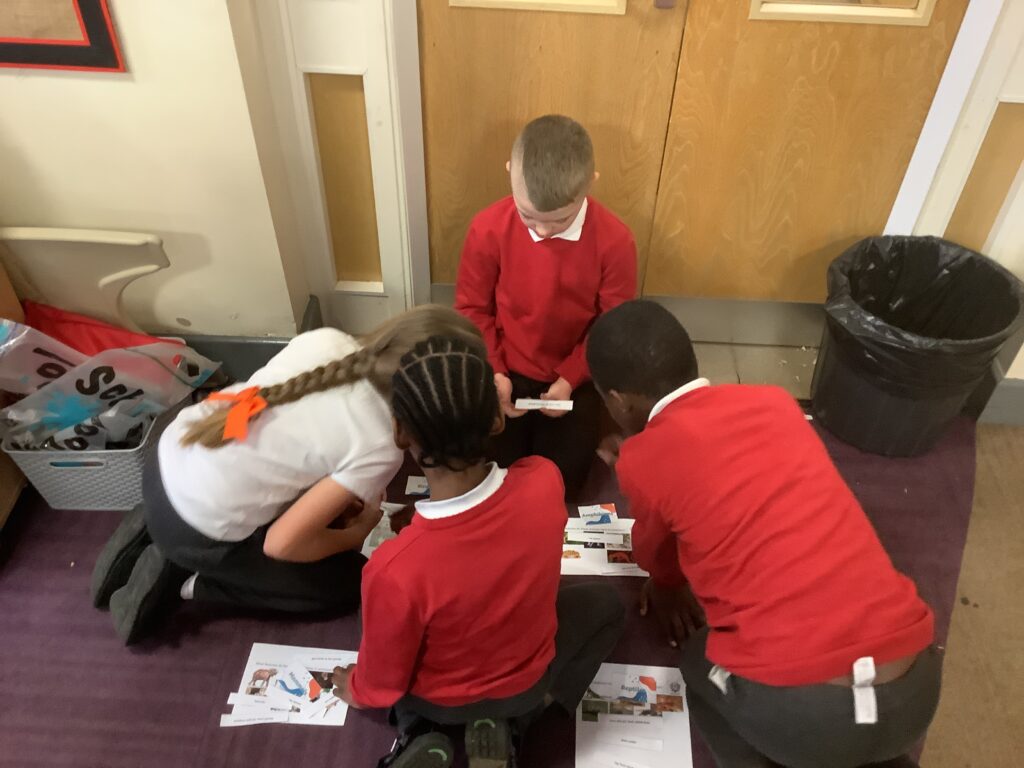
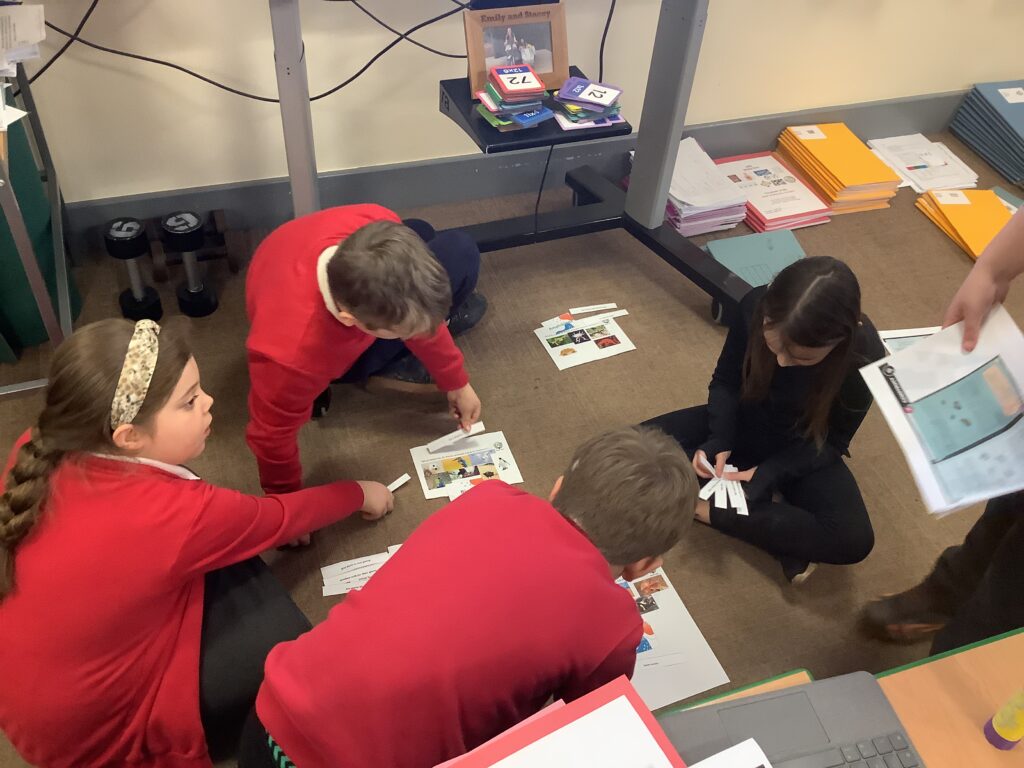
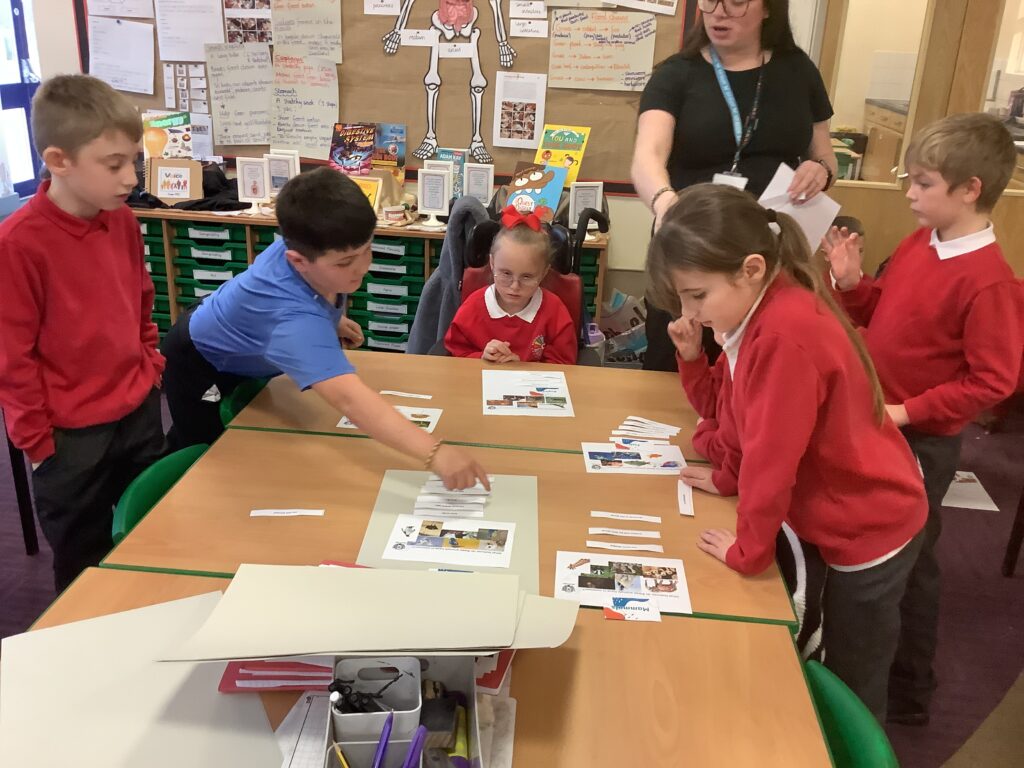
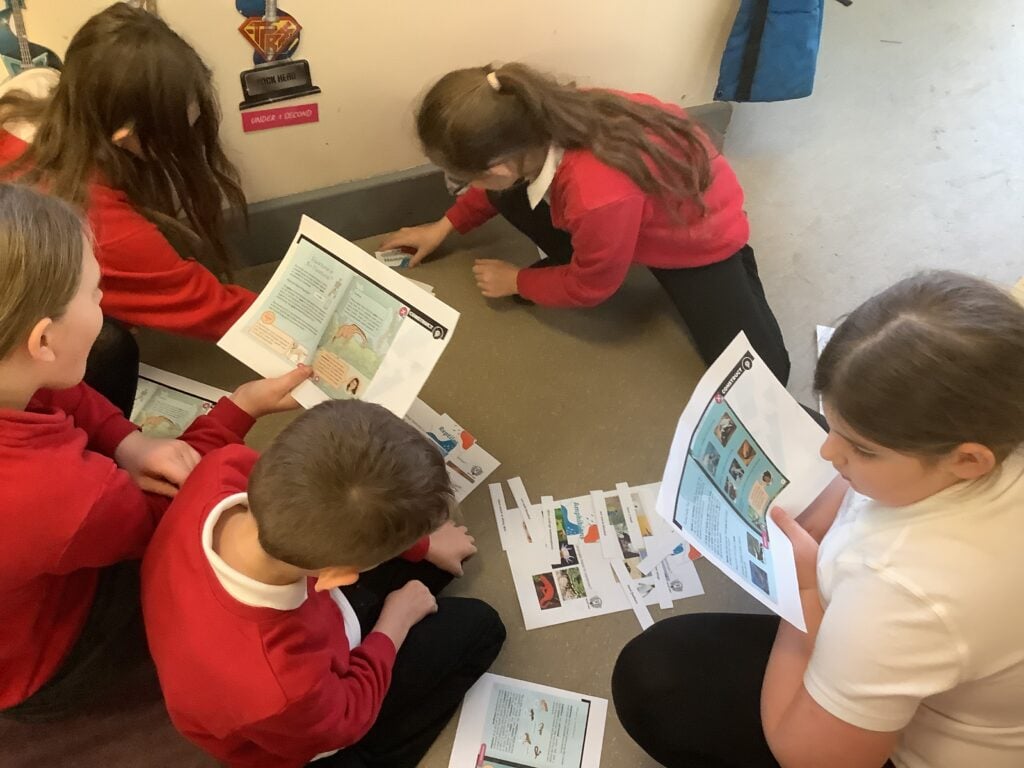
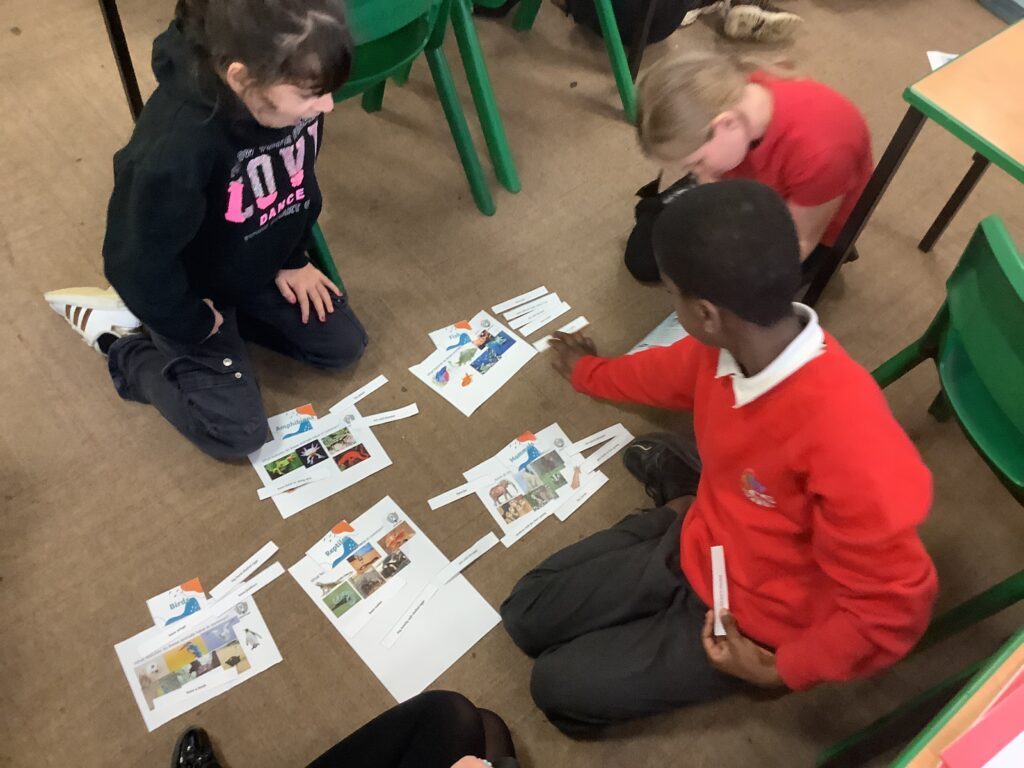
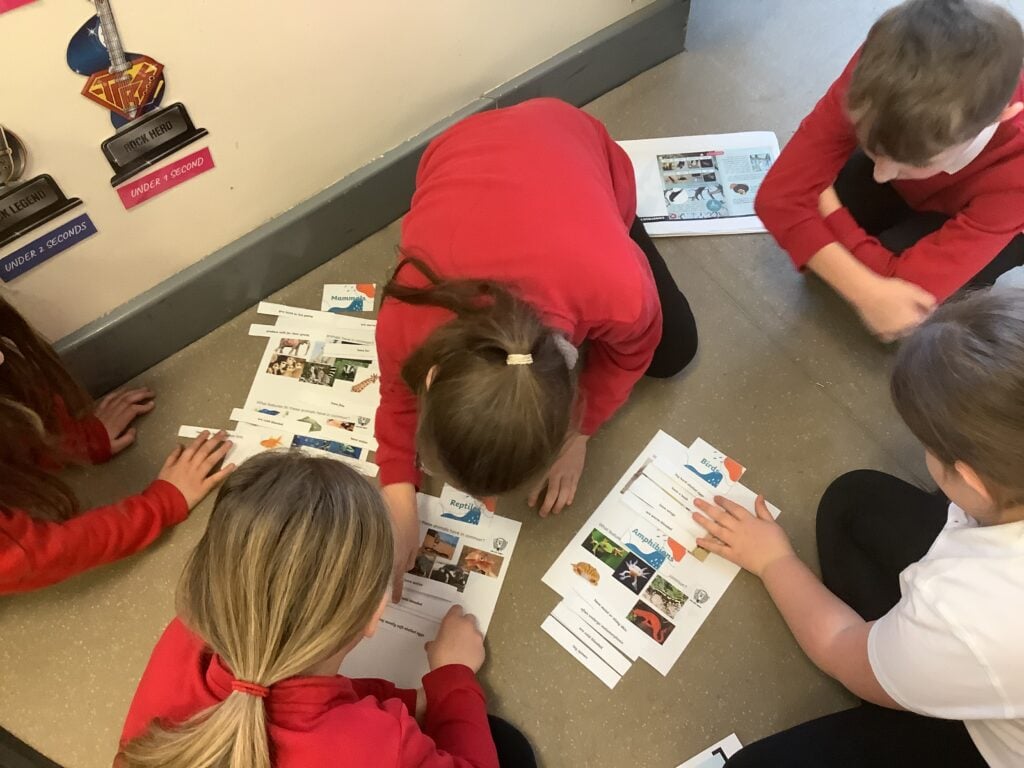
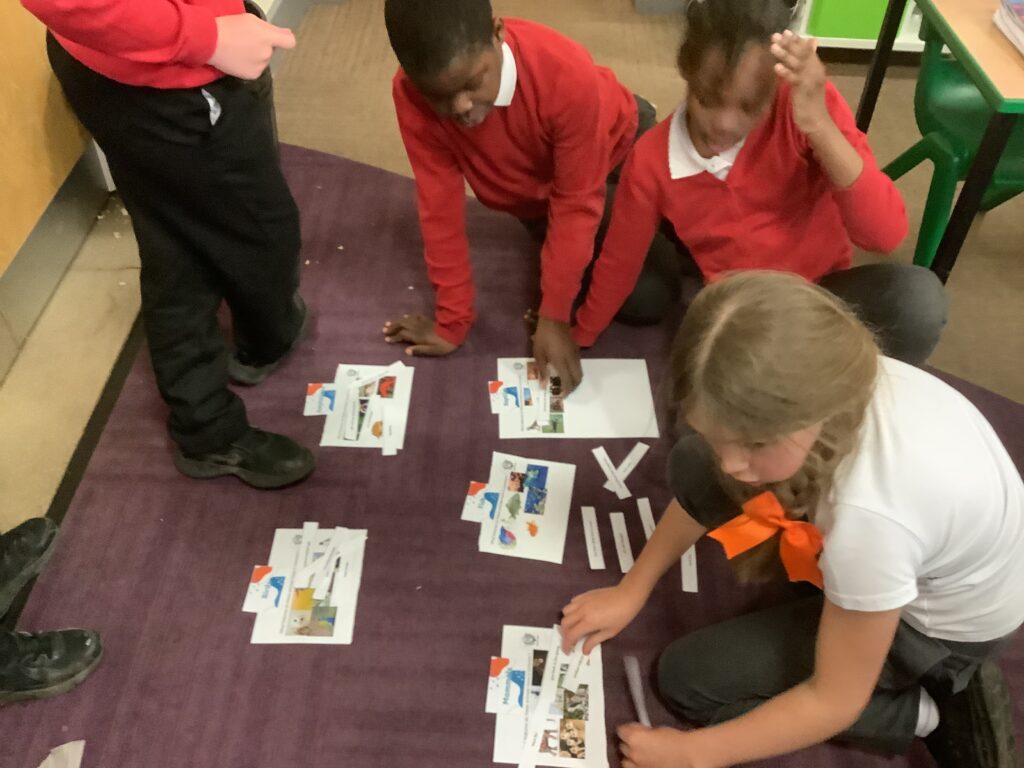
We then took part in a quiz to test our understanding further! We are really enjoying our expeditionary lessons 🙂
Our expeditionary learning today allowed us to recognise that living things can be grouped in a variety of different ways. First of all we looked at a variety of objects and thought about how we may group them. We worked well in mini crews to do this. We then moved onto looking at similarities and differences between certain living things and animals. We thought back to our previous lessons on food chains and skeletons to help us with this task. We then moved onto sorting animals into groups using similarities and differences to help us. We thought more about how animals can be grouped including through habitat, physical features and through diet. We discussed the term classify in more detail and related this to ‘taxonomy’. Again, there were lots of reading opportunities where we used fastest finger first to find answers. From here we worked in mini crews to find as many different ways as we could to sort a variety of animal pictures. There was some great collaborative working which was fantastic to see. Our debrief then allowed us to share our groups with the whole crew.
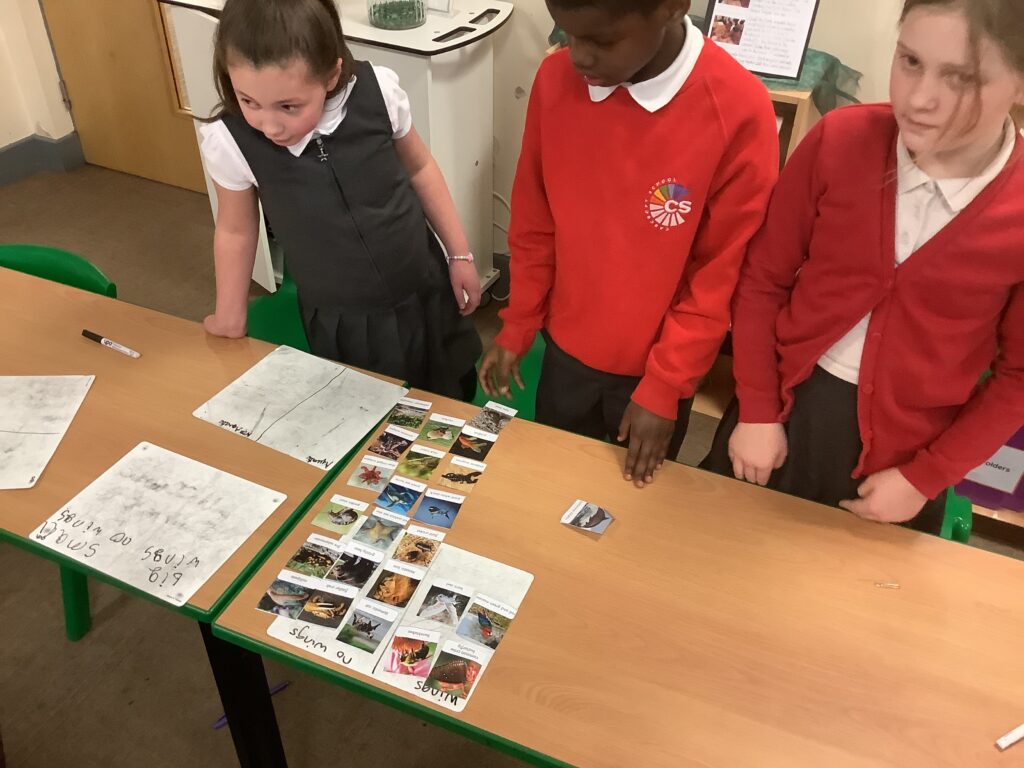
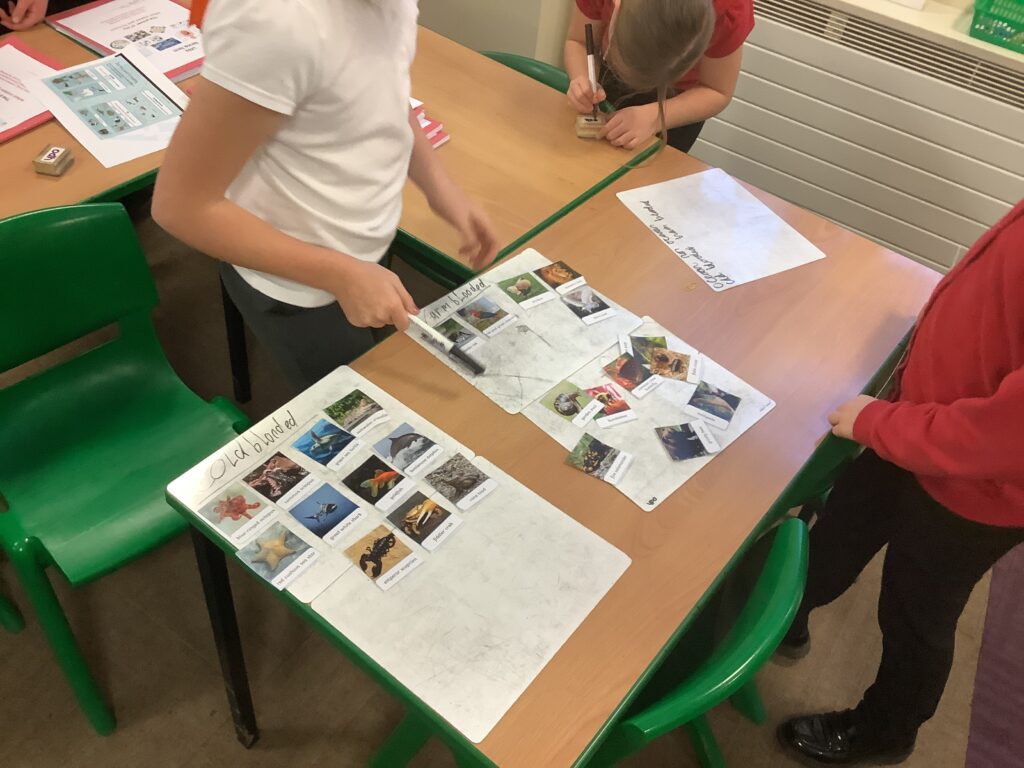
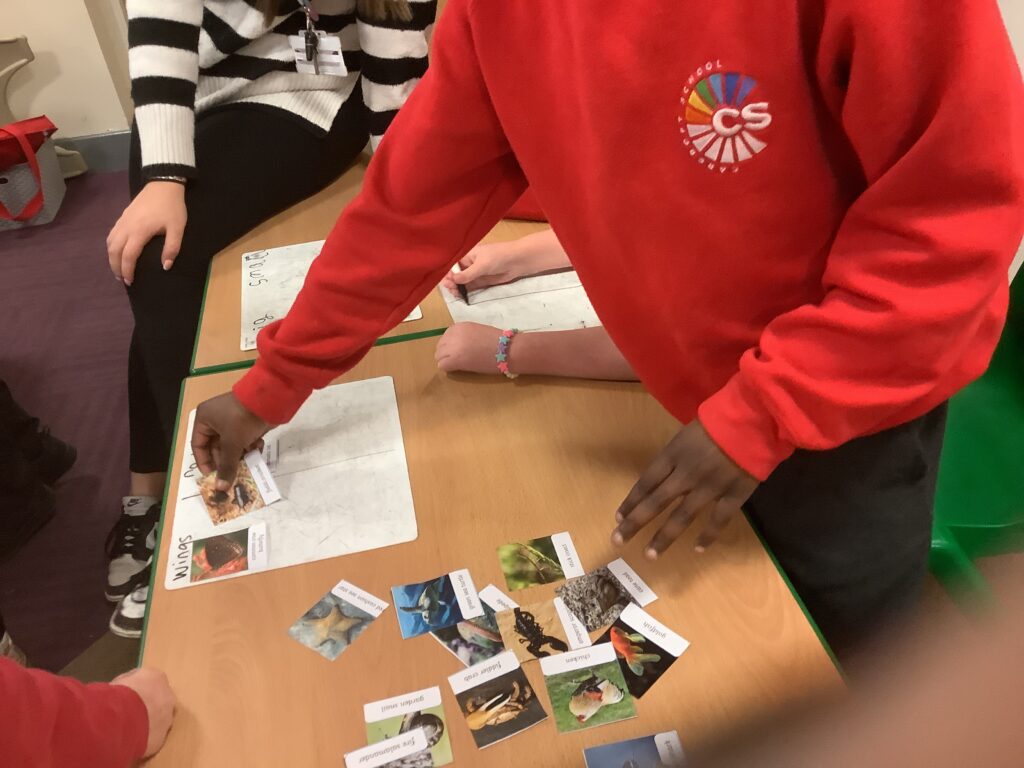
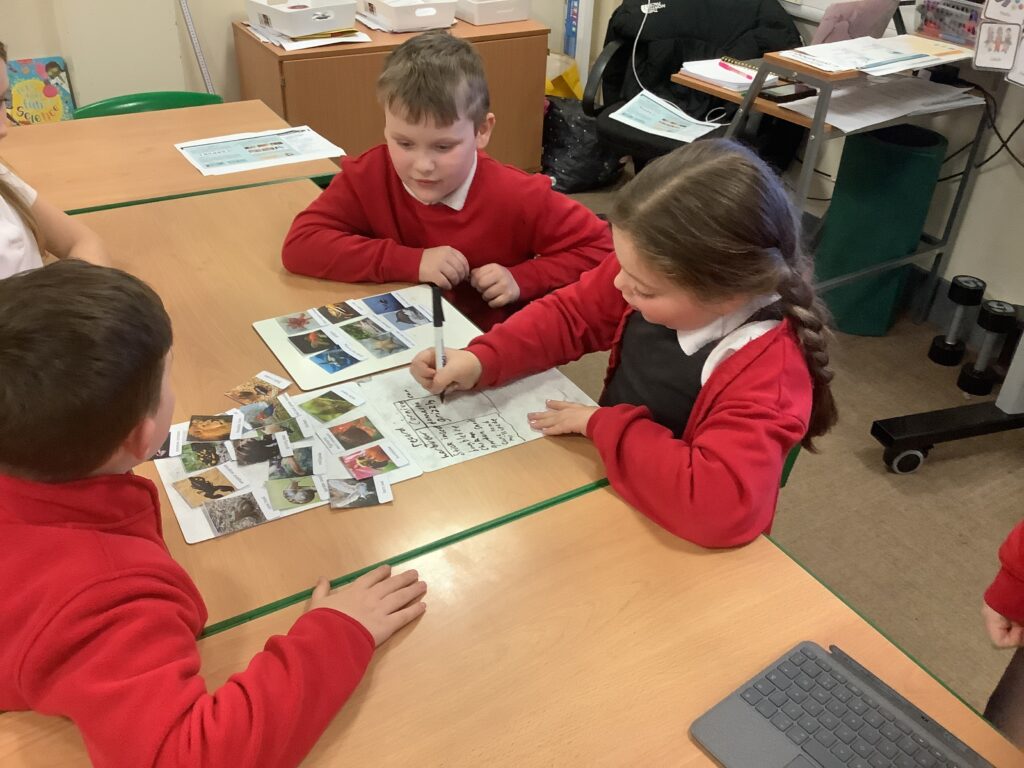
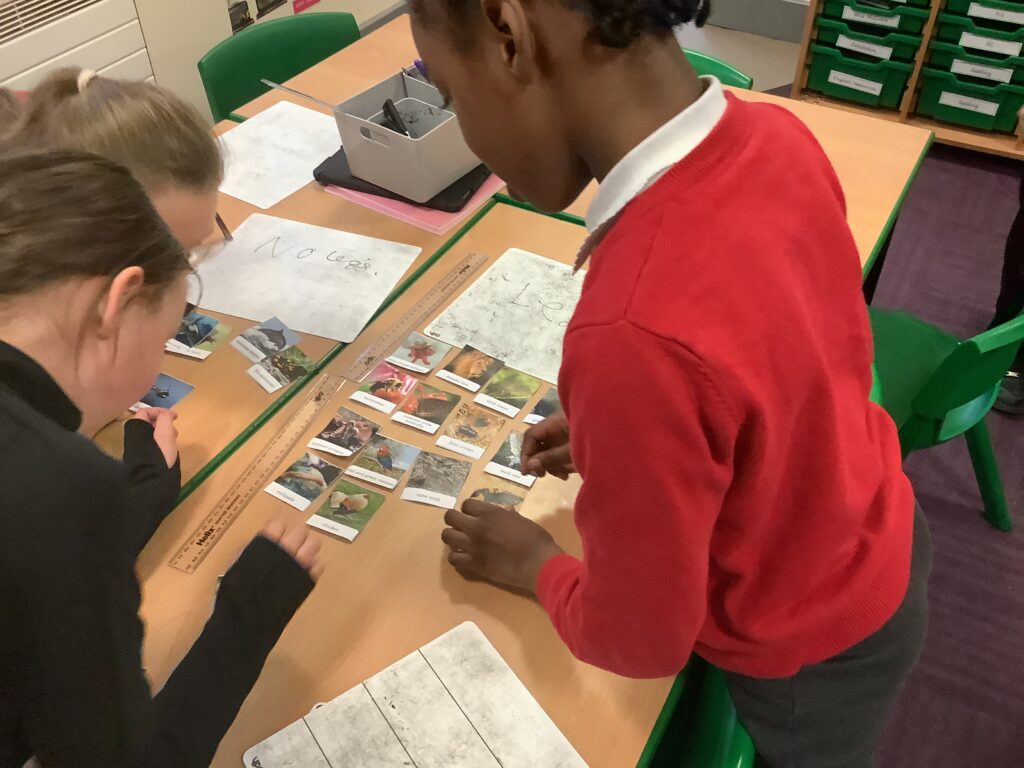
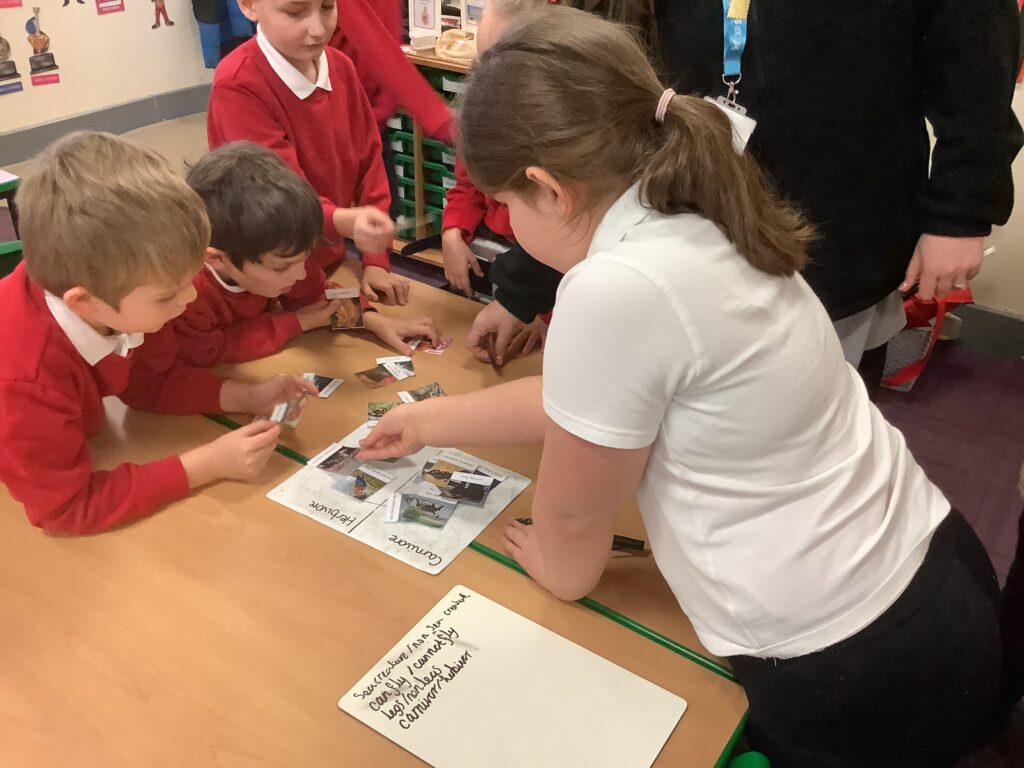
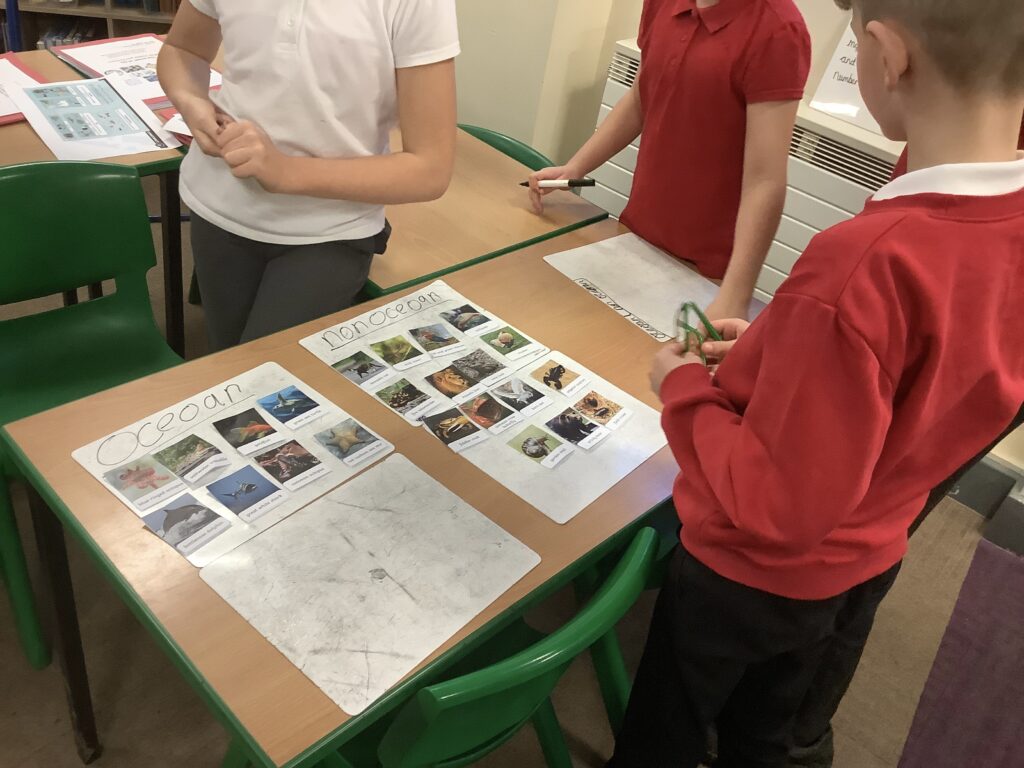

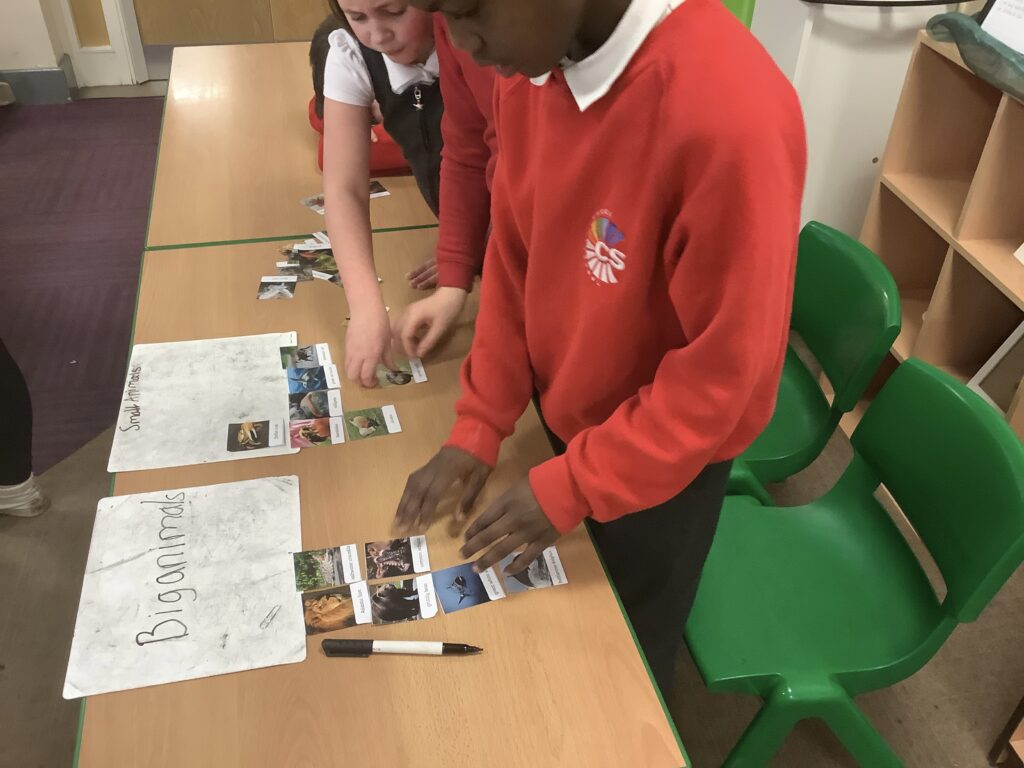
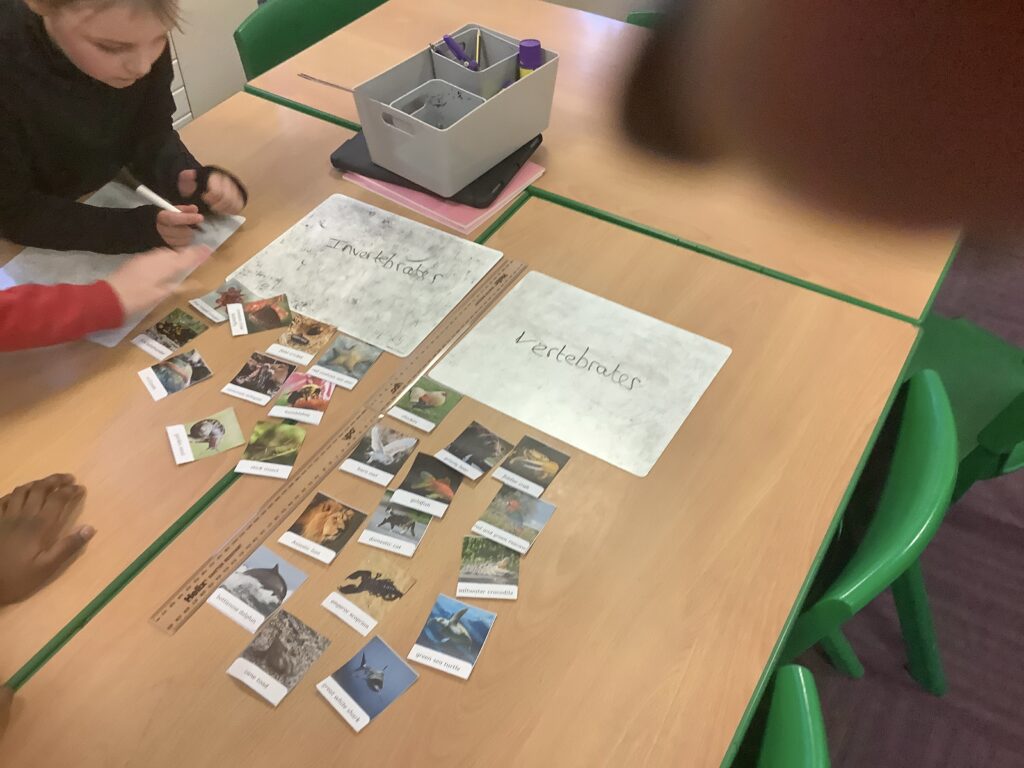
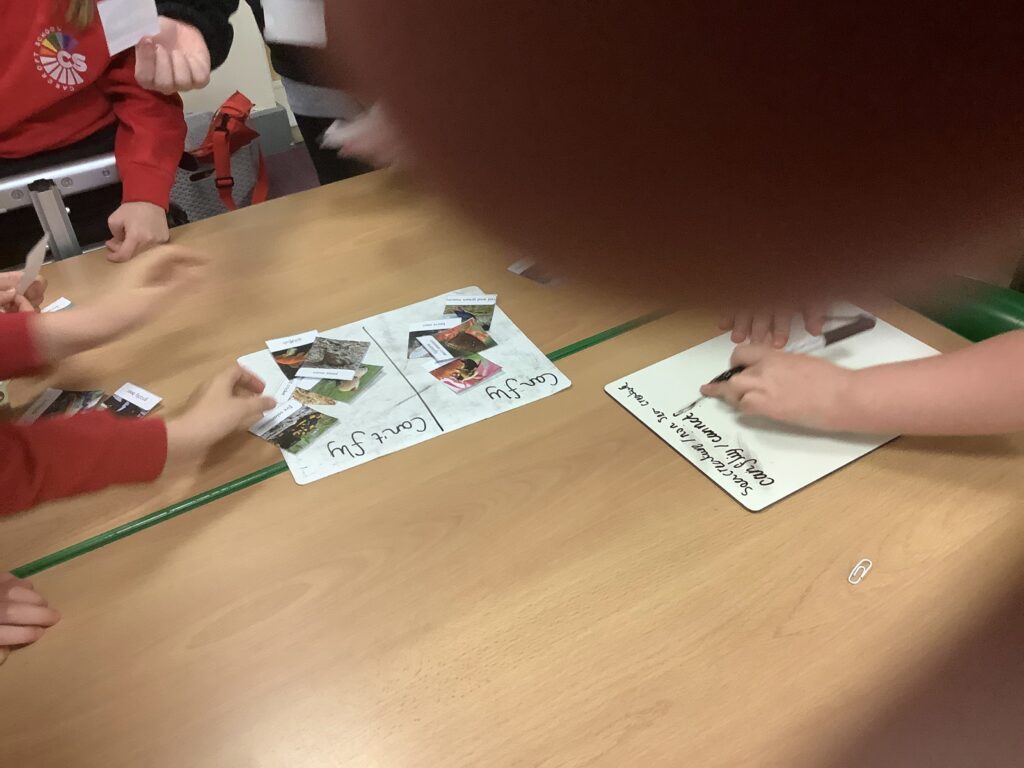
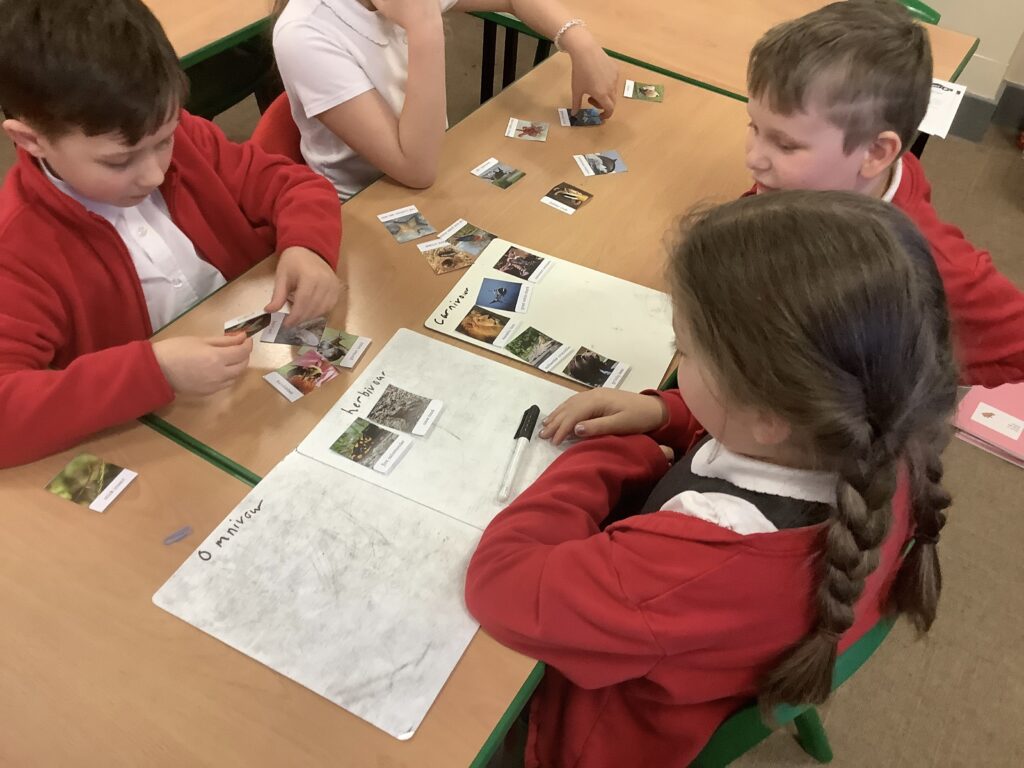
The activate to our expedition lesson today allowed us to recap the human body by making a skeleton. We did this in hook week and it was incredible to see how much quicker we had got today and how much we had remembered!
From here we discussed the differences between vertebrates and invertebrates where we did lots of reading out loud. We played fastest finger first and did lots of discussion! Some of the facts really surprised us when reading. We then explored the types of skeletons linking these to vertebrates and invertebrates. We did some partner reading, echo reading and also some independent reading. We then tested our understanding so far with a quick quiz! We all enjoyed this.
From here we worked in mini crews to sort animals into the two groupings- vertebrates and invertebrates. We discussed our ideas and explained our reasons. We then moved onto the human skeleton, we looked at scientific names for our bones, explored how many bones an adult human skeleton has and looked at what a skeleton does. We linked our skeleton to the digestive process, thinking about the organs that are protected by our bones. From here we discussed our muscles, we even had a go at contracting and relaxing our biceps and triceps! Tomorrow we will assess our understanding with a kahoot quiz!
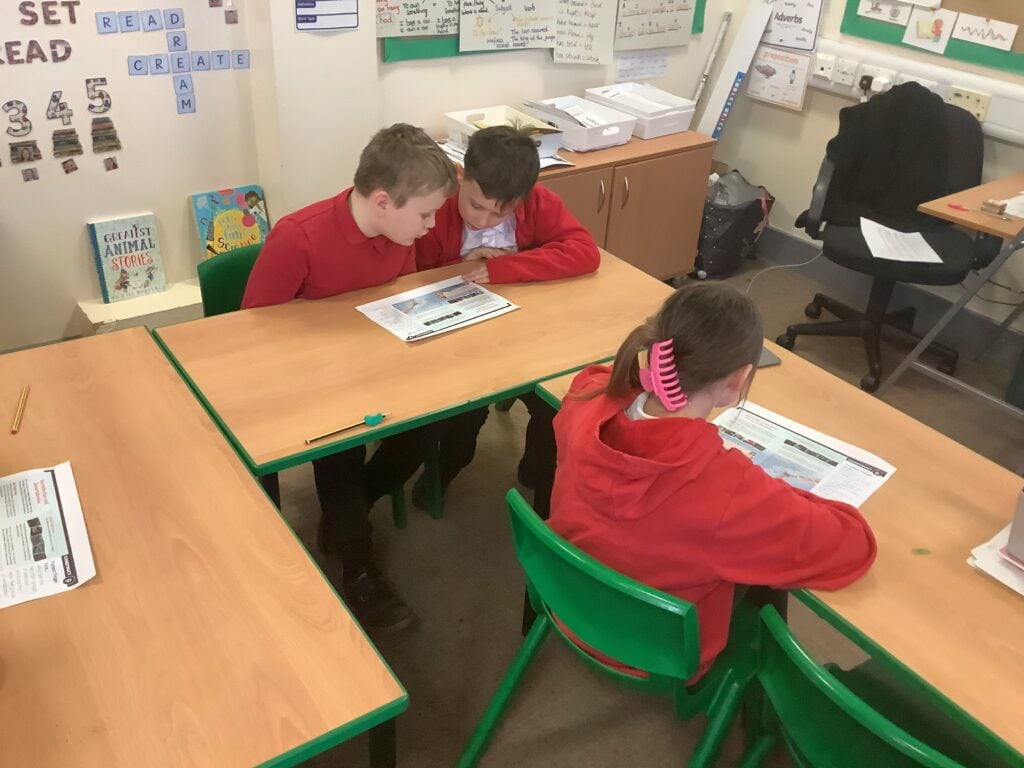

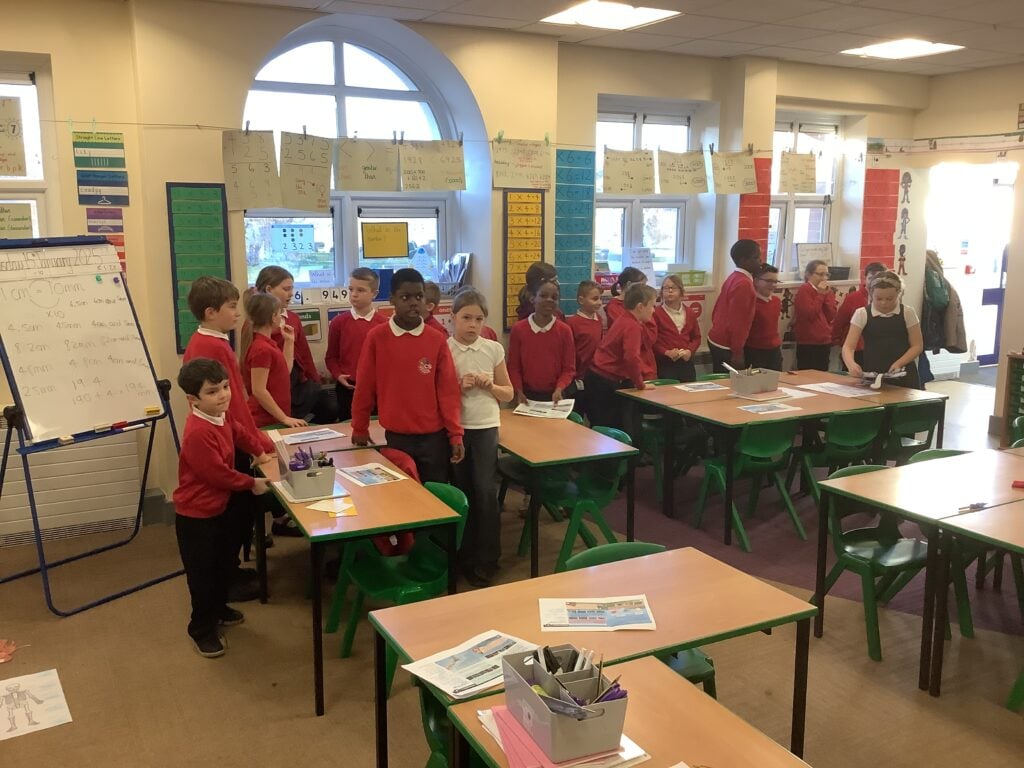
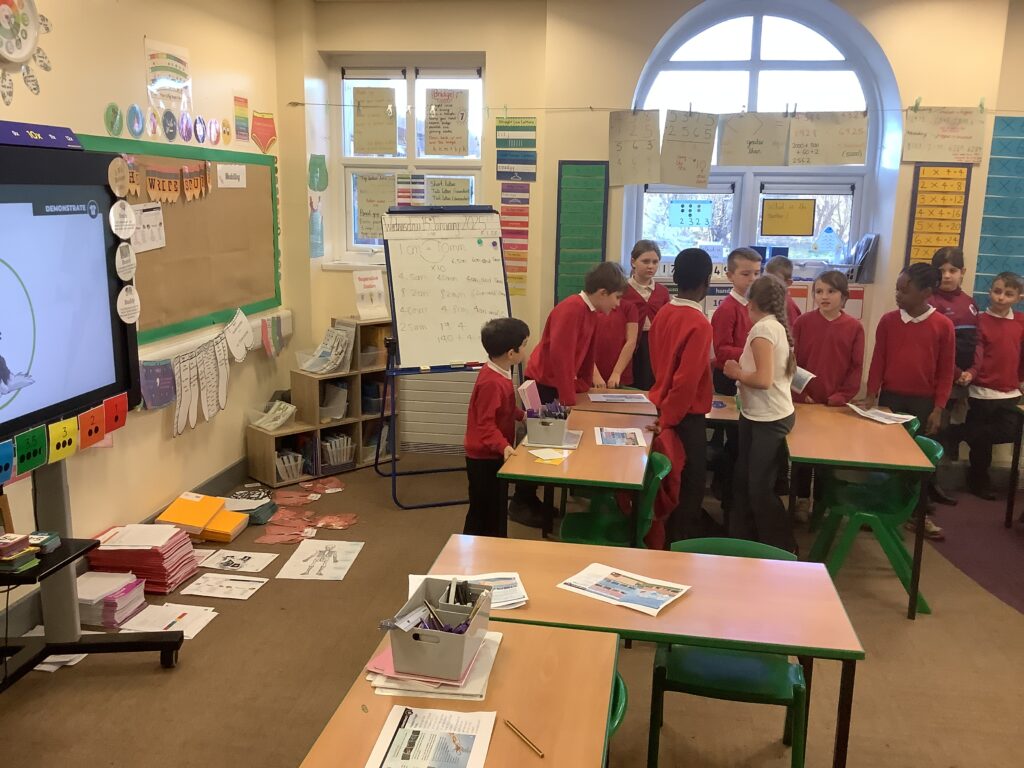
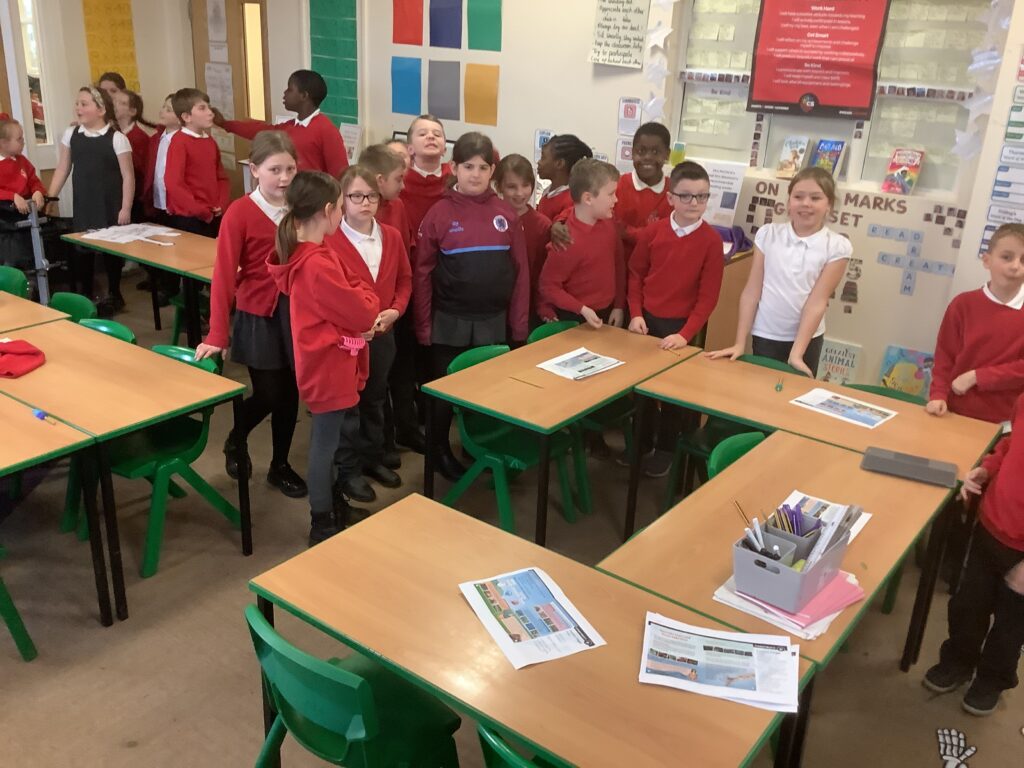


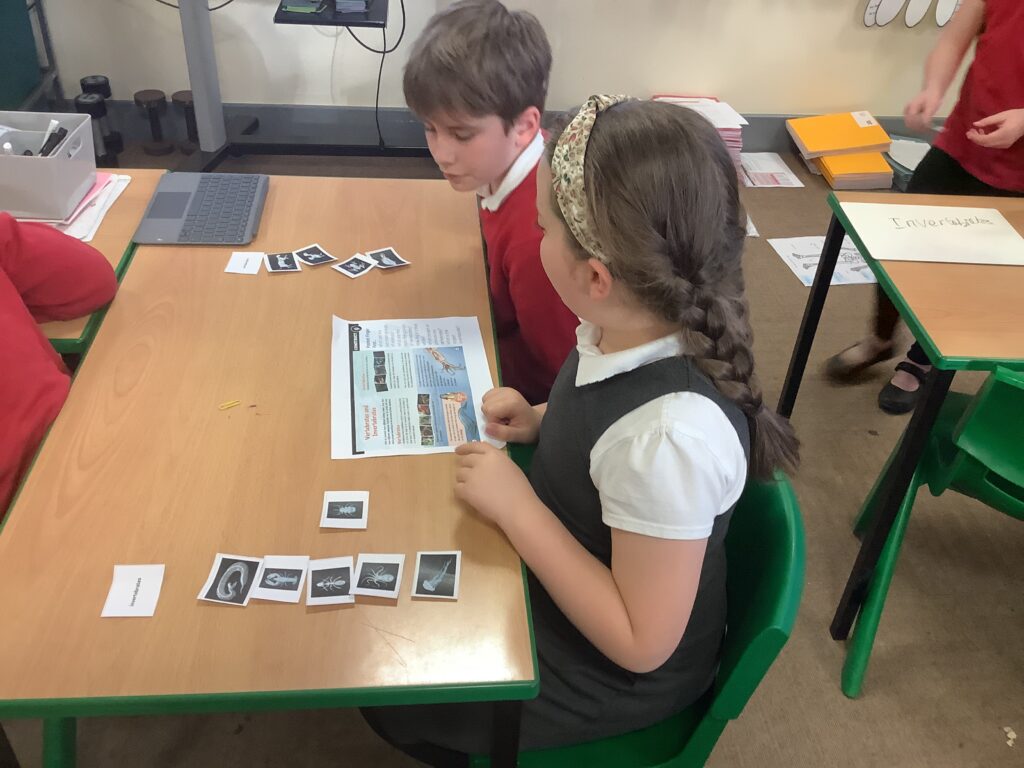
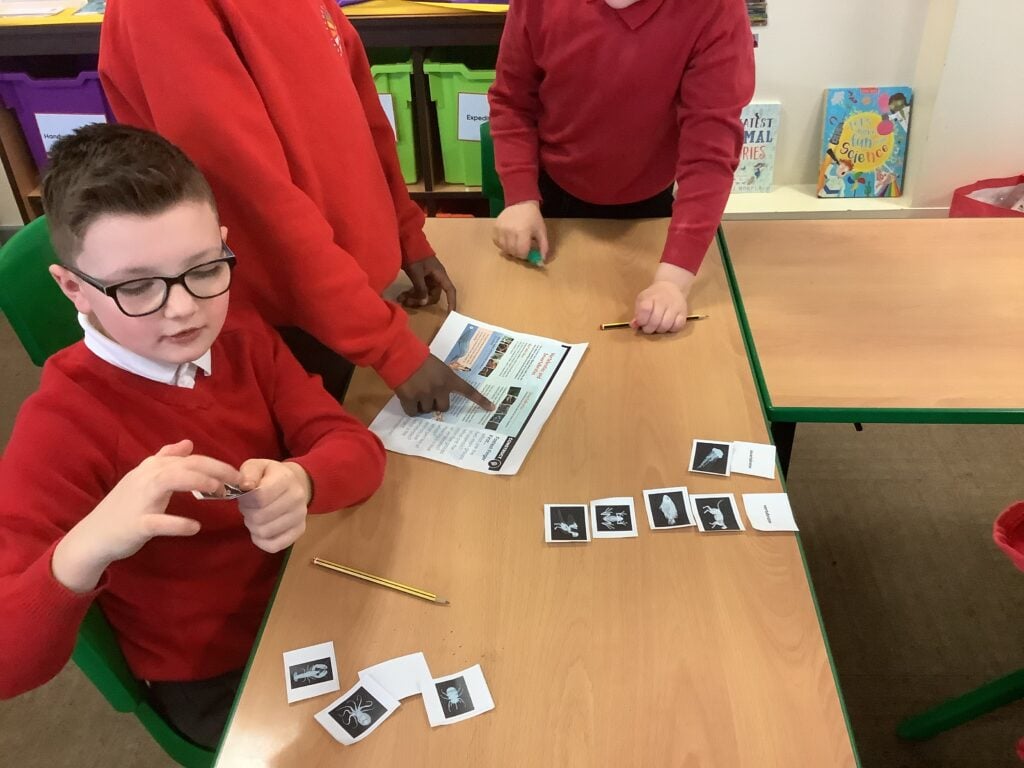
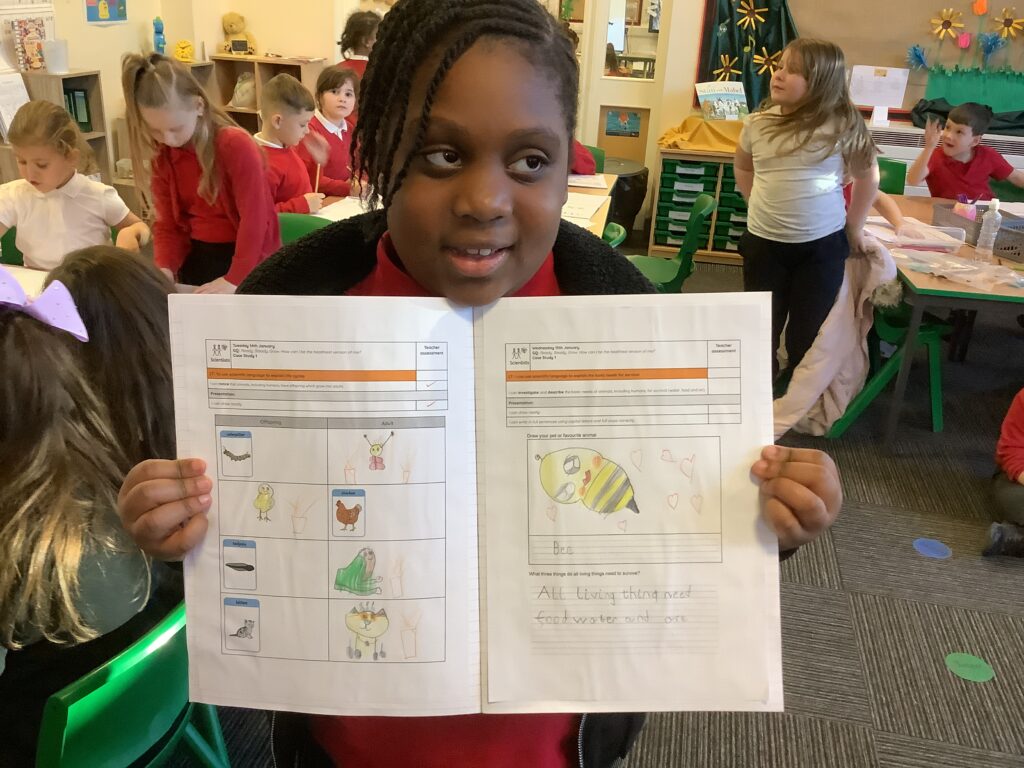
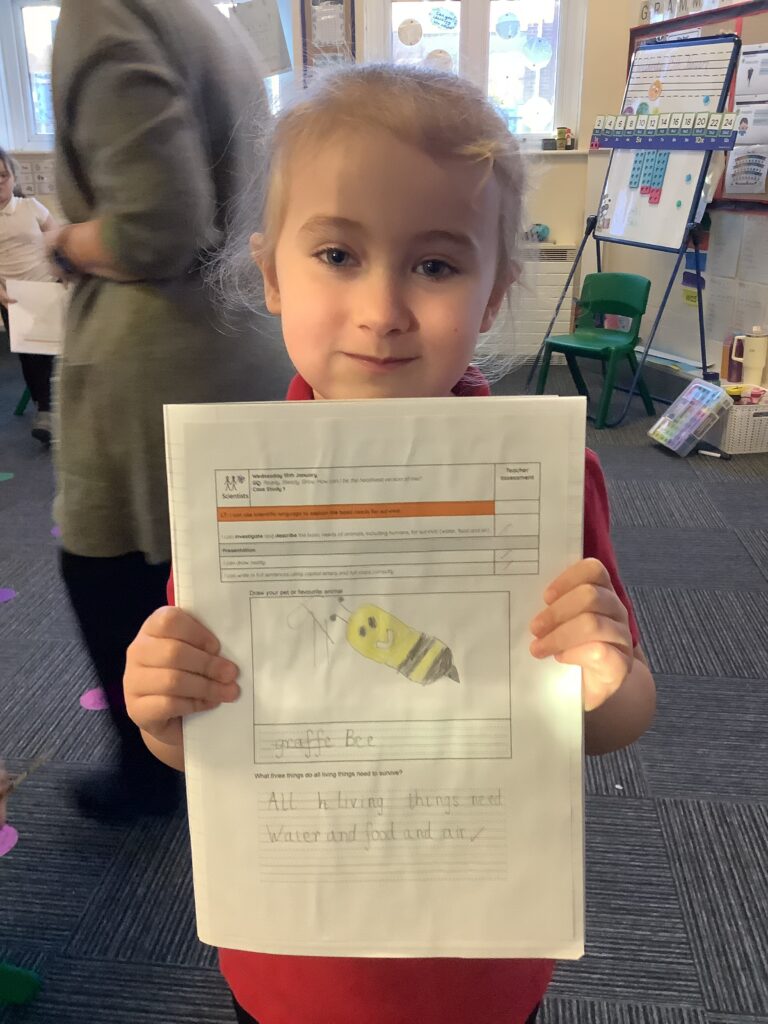
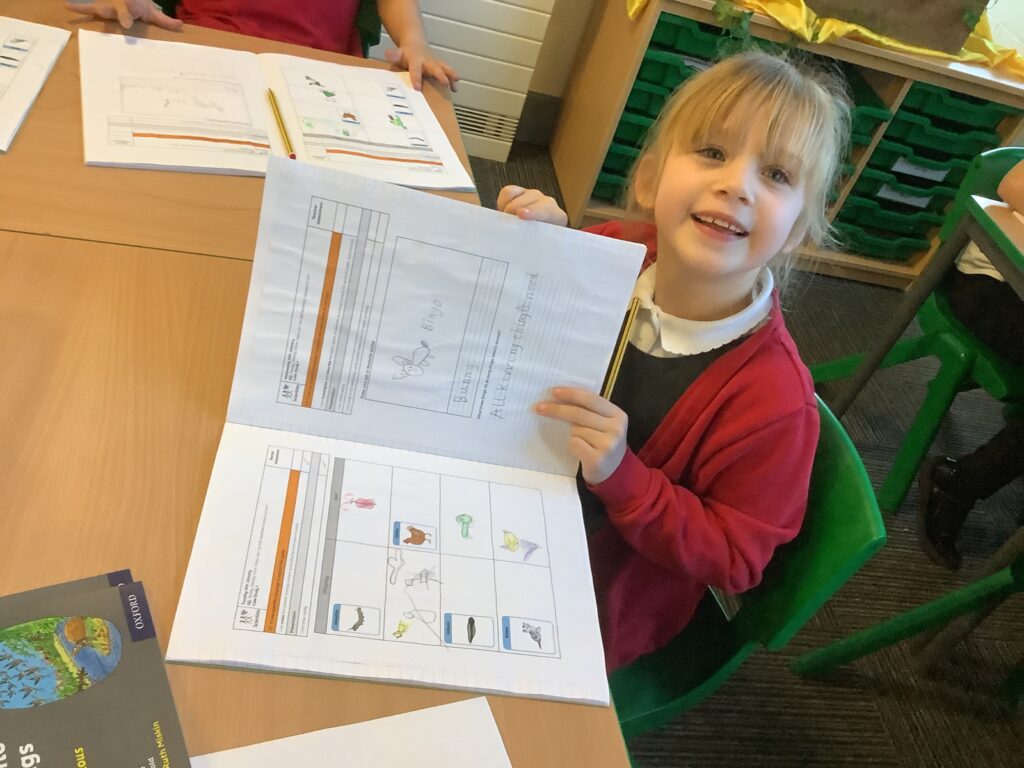
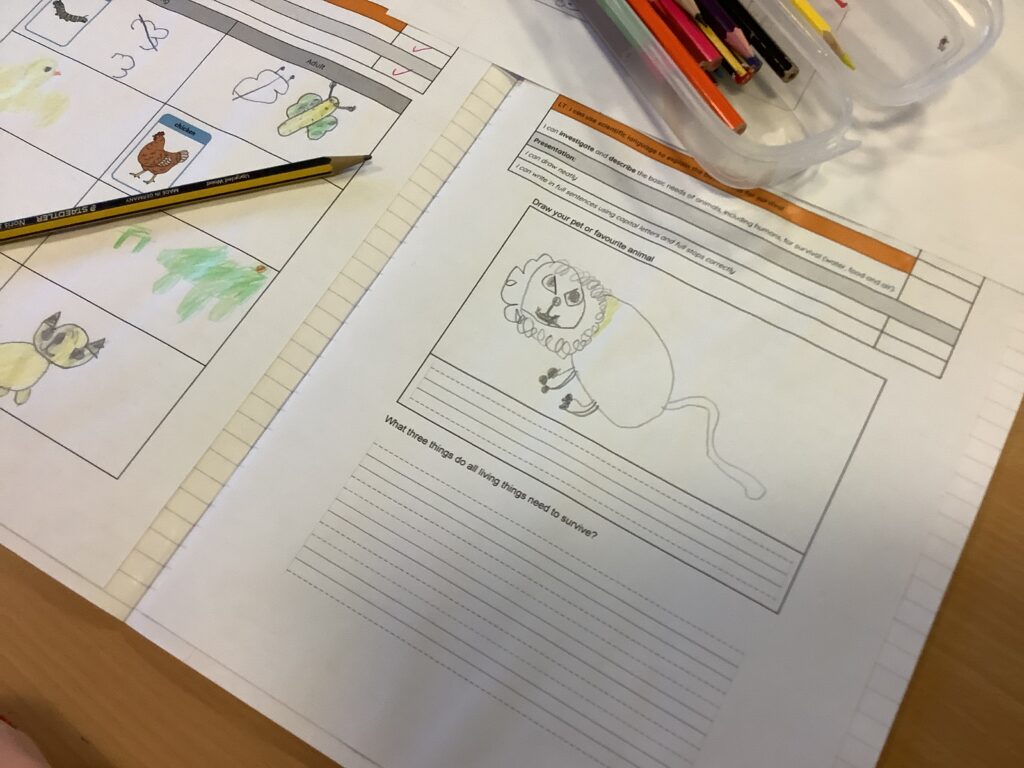
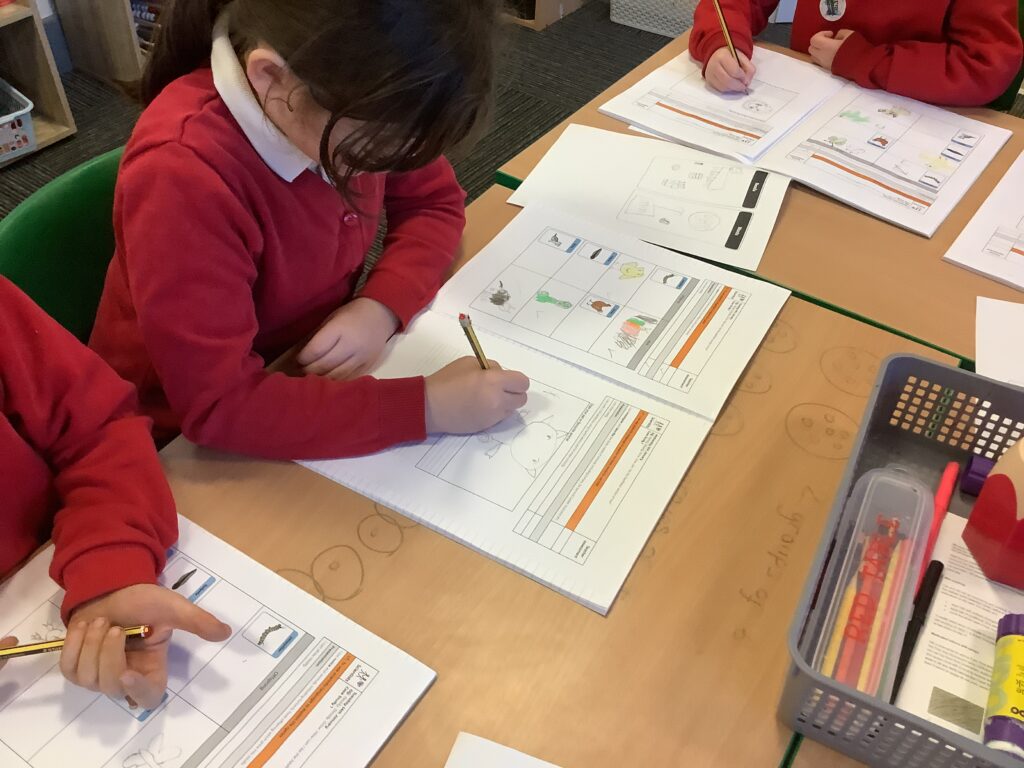
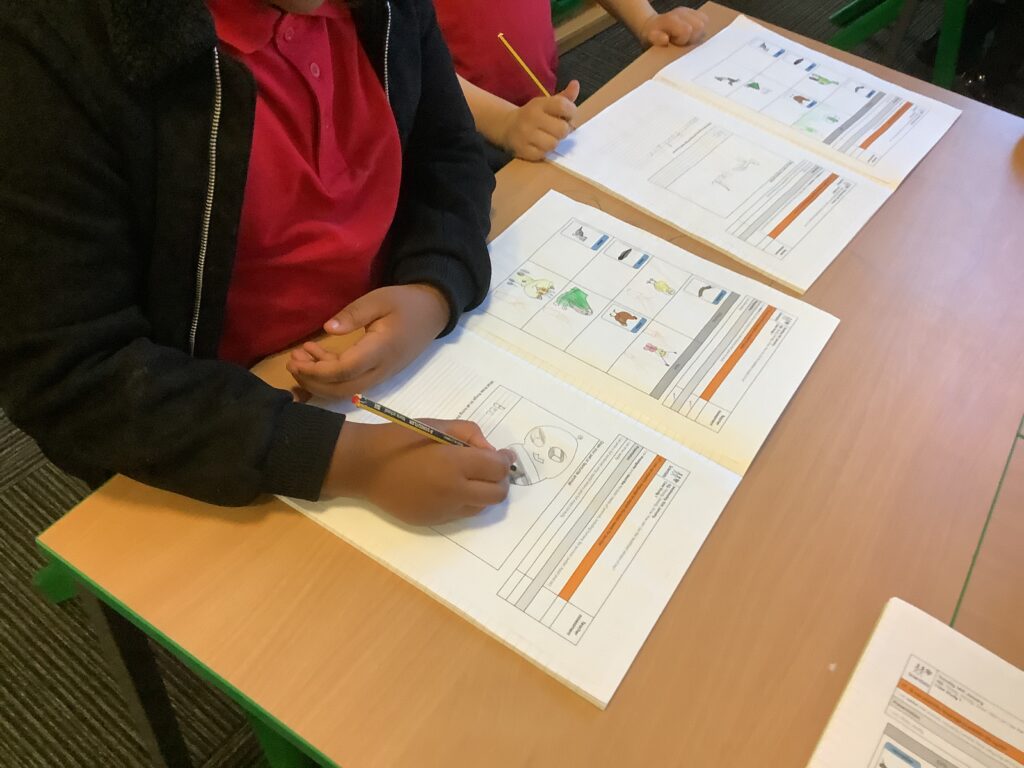
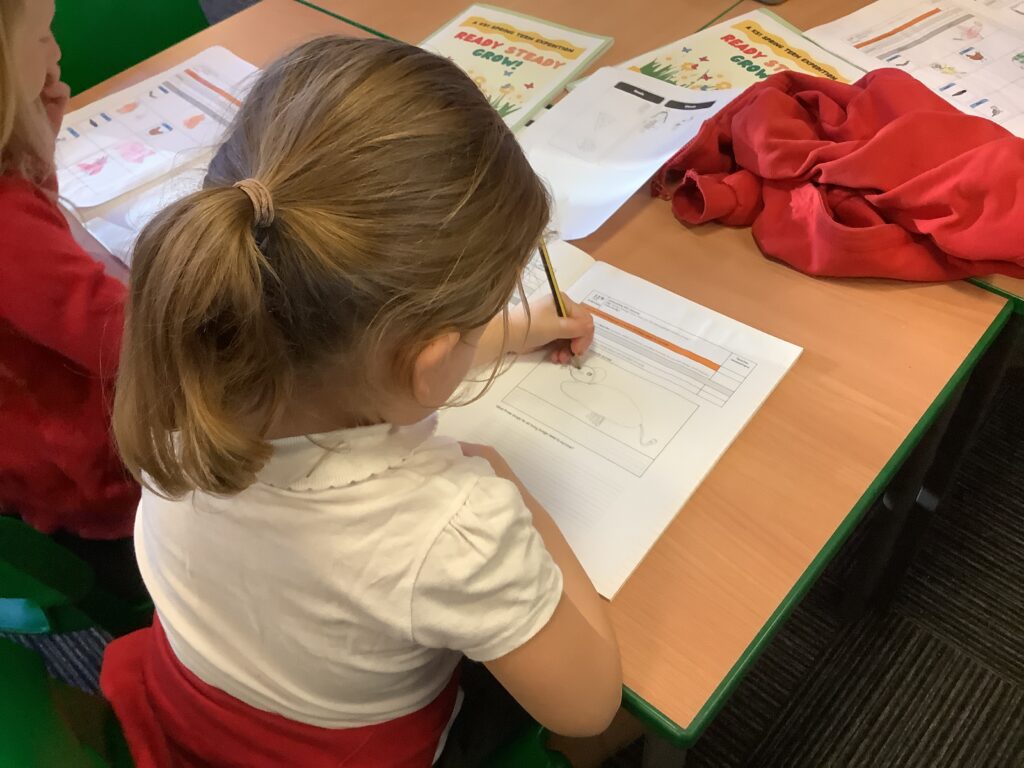
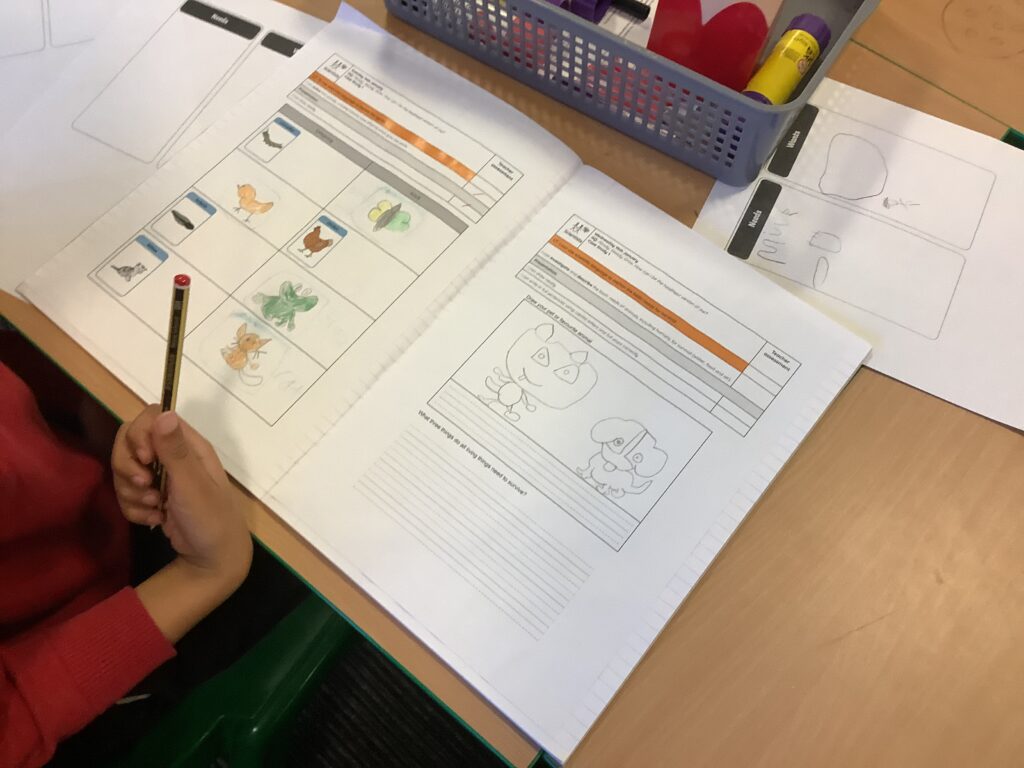


Today we were scientists again and discussed what humans and animals need to survive. The children knew they needed food and water to survive and we also discussed the importance of air.
They produced lots of beautiful work. Well done everyone!